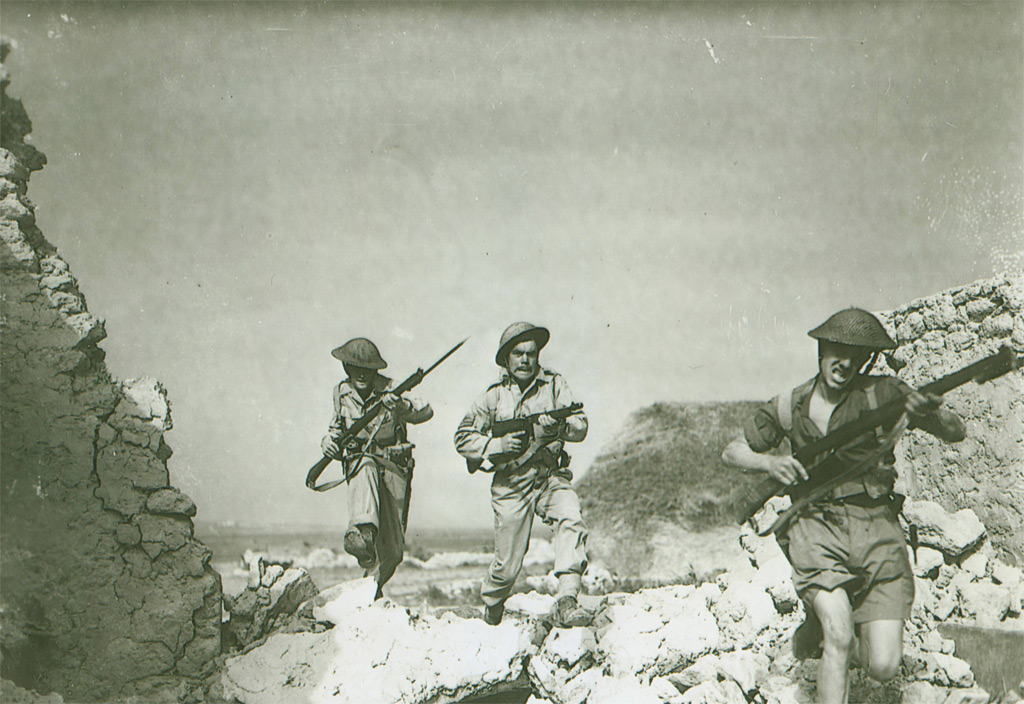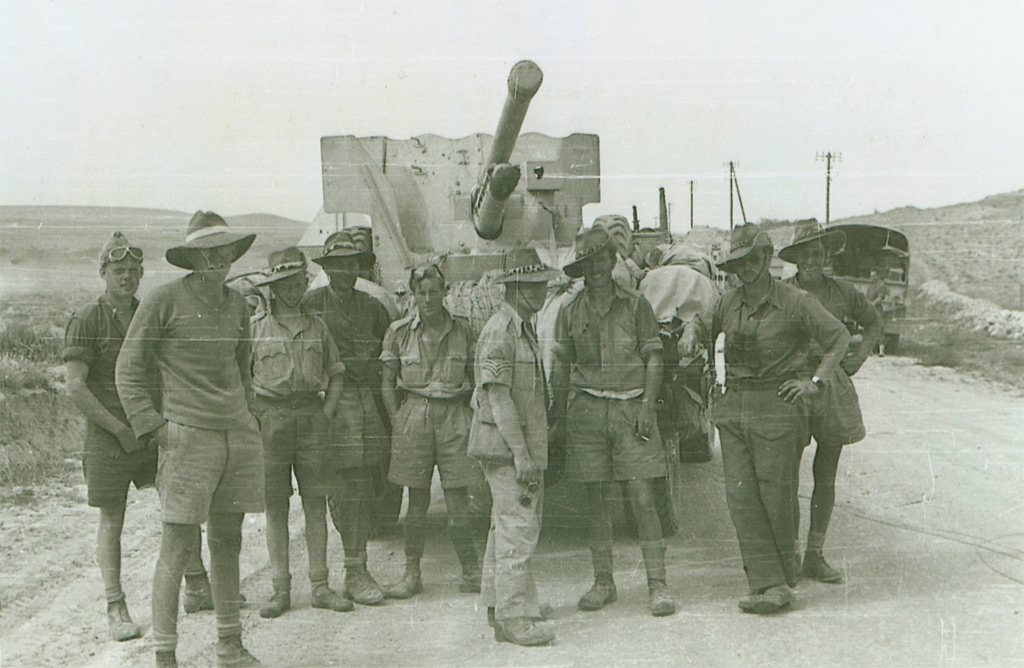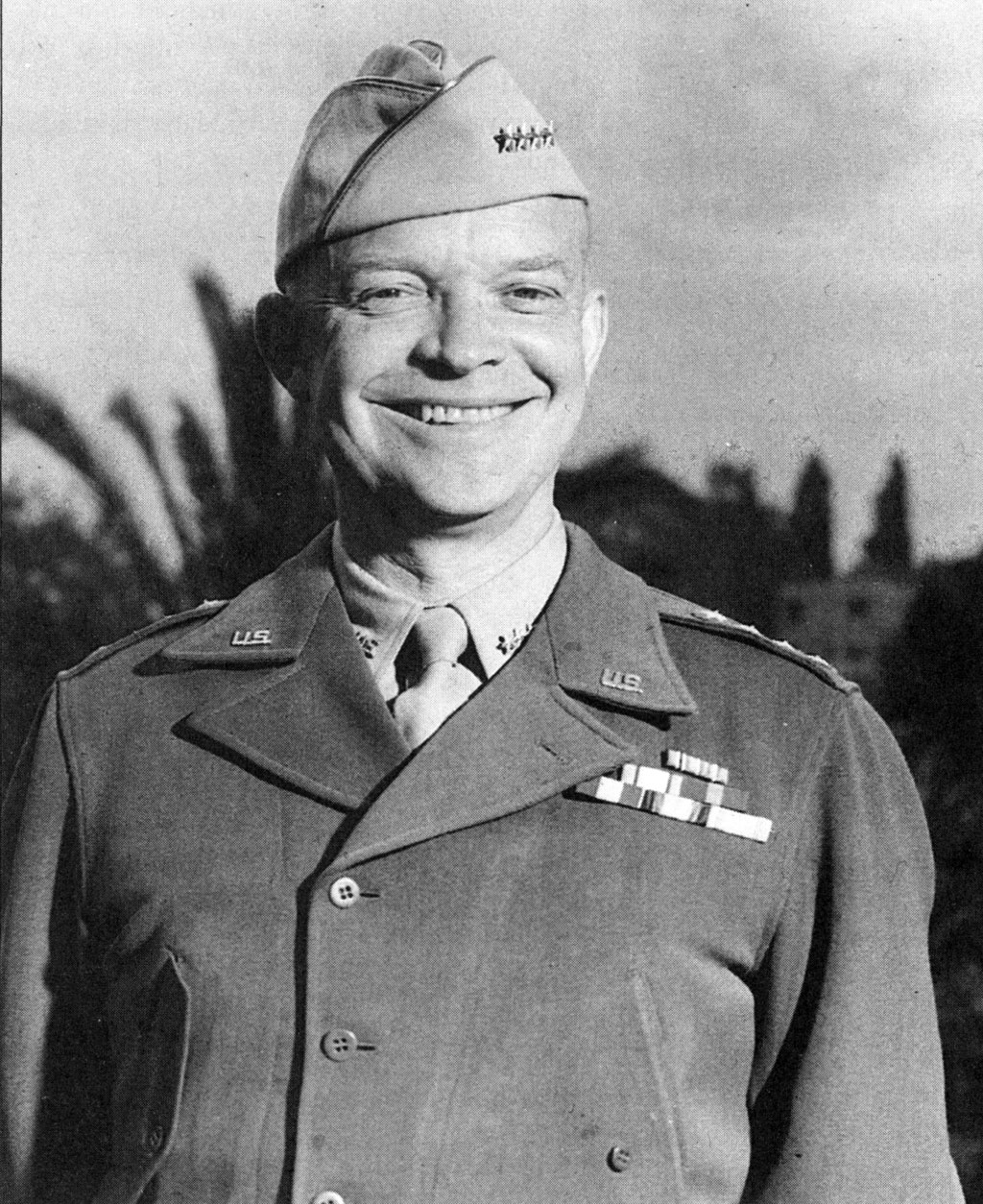
The commander-in-chief of Allied forces in North Africa, General Dwight D. Eisenhower, photographed in Algiers in early 1943.
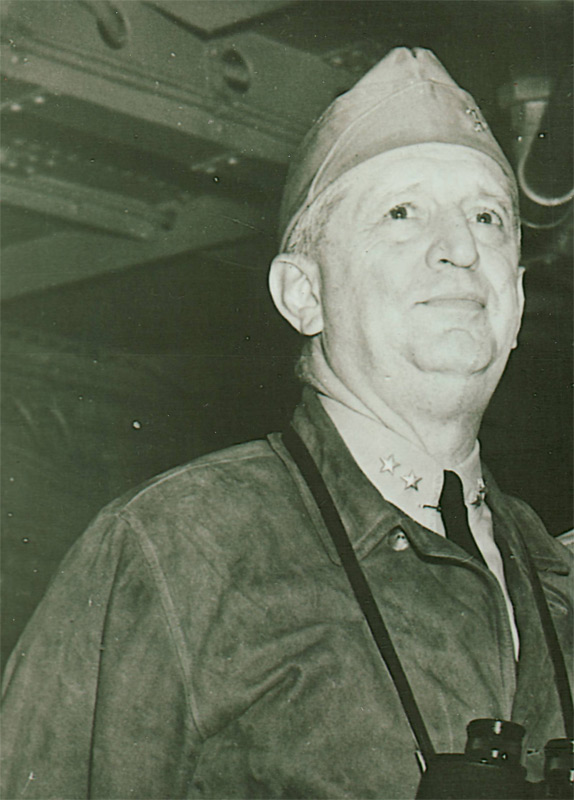
Rear Admiral H. Kent Hewitt, commander of Task Force 34, during the American invasion of Morocco in November 1942. At fifty-five, with a high, bookish forehead and a mild demeanor, Hewitt was nevertheless a formidable fighting admiral.
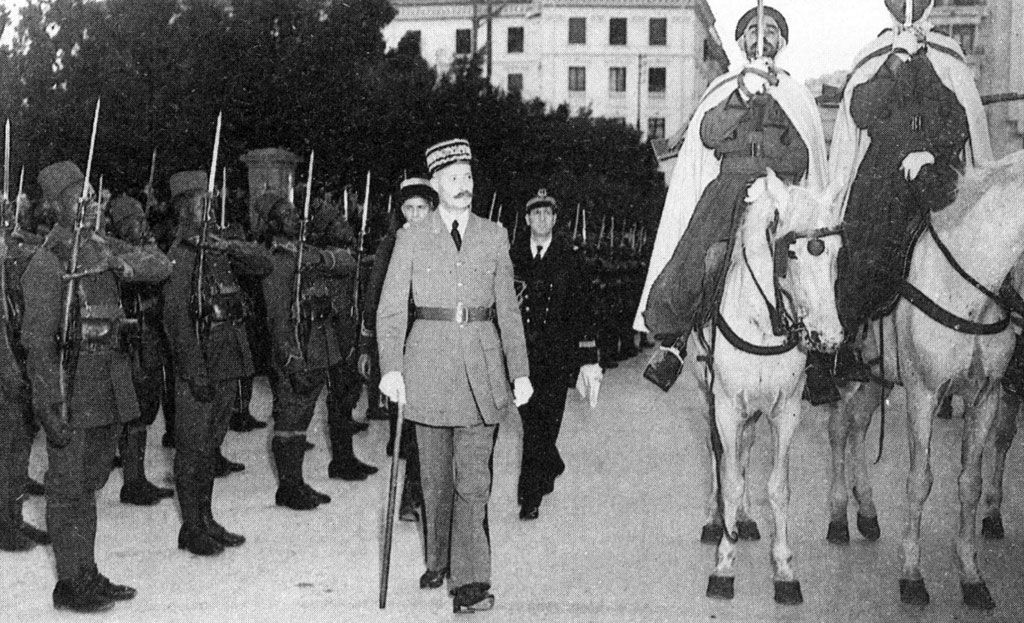
General Henri Giraud inspects spahi cavalrymen and colonial riflemen in Algiers. Intrepid and brave, with a knack for escaping from German prisons, he also possessed what one Frenchman described as the uncomprehending eye of a porcelain cat.

Colonel Robert R. Moore, a druggist from Villisca, Iowa, rose from the “Boy Captain” of his National Guard company to command the 2nd Battalion of the 168th Infantry Regiment during the German counteroffensive east of Kasserine Pass. (Courtesy of the Moore family)
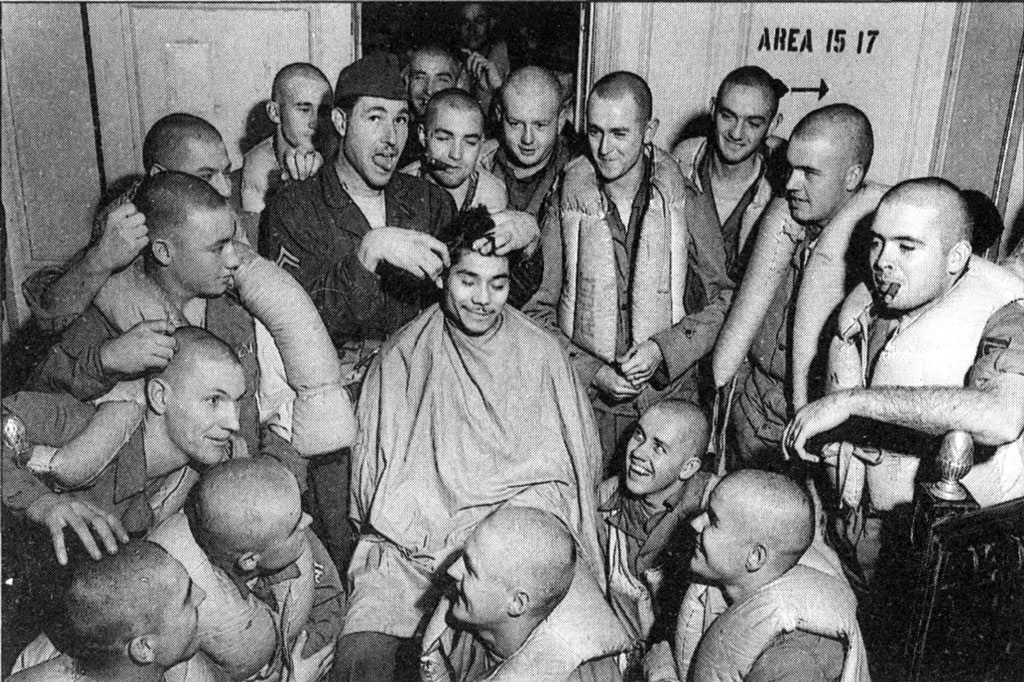
Four days before the American landings in Morocco, Signal Corps soldiers aboard ship initiate another member into the Bald-Head Club. All troops were ordered to shower before the invasion to lessen the chance of wounds becoming infected.
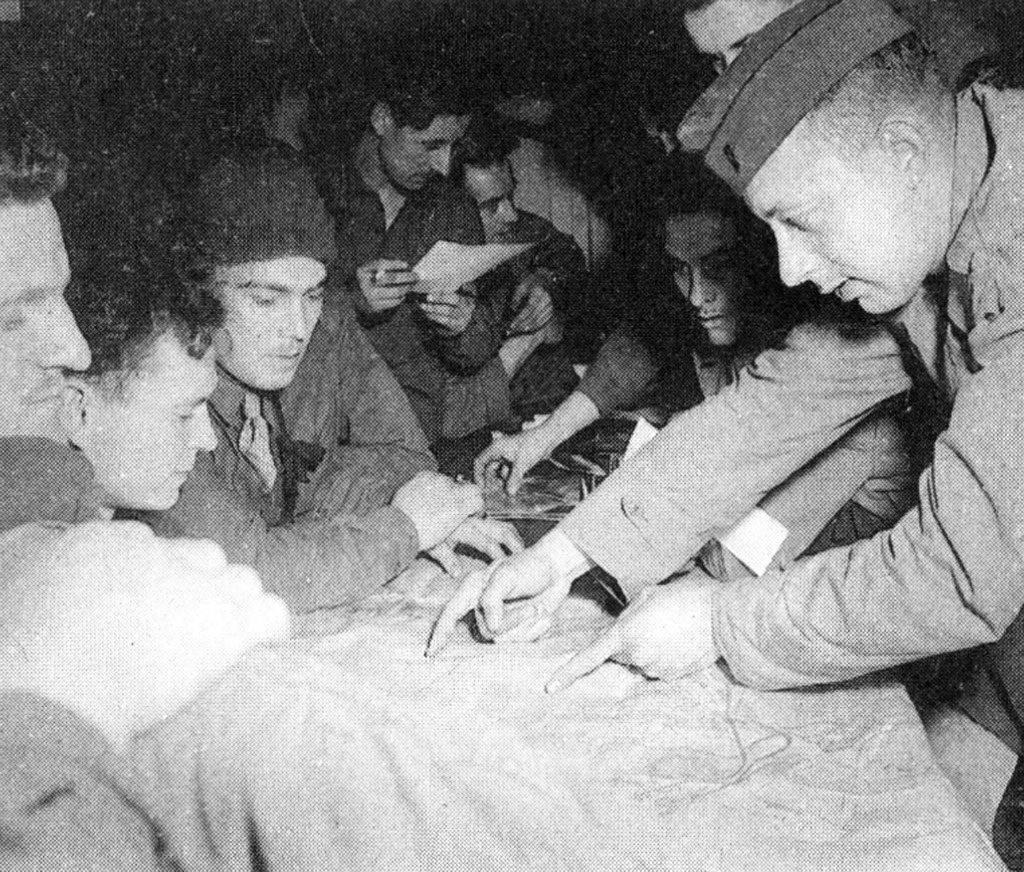
Men from the 1st Ranger Battalion review a map of Arzew aboard ship, November 7, 1942, hours before they captured the Algerian harbor at the beginning of the TORCH invasion.
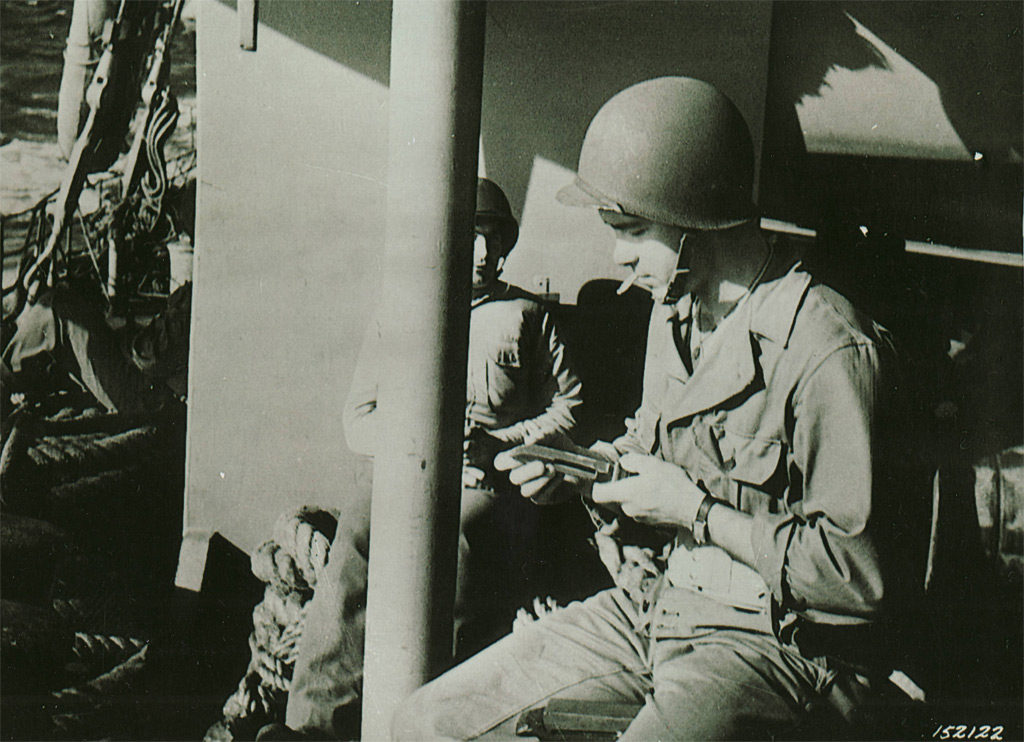
The harsh sound of steel on whetstone could be heard throughout the convoys as soldiers put an edge on their bayonets and trench knives during the passage to Morocco and Algeria. This photograph was taken on November 7, 1942, invasion eve.
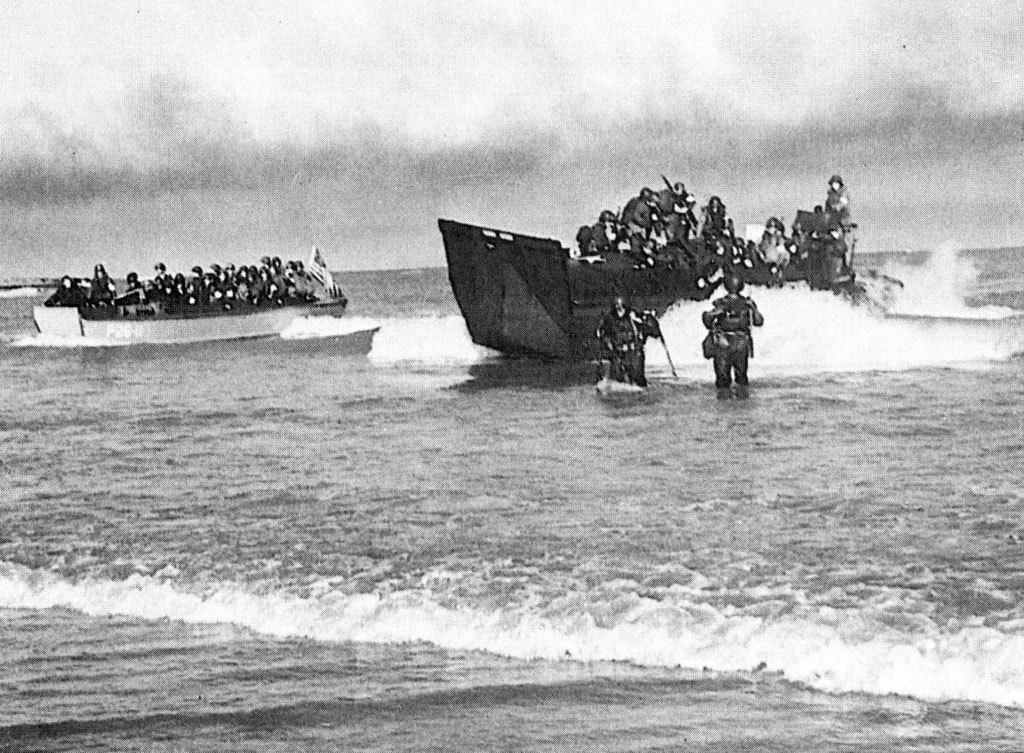
American troops landing at Fedala, Morocco, on Sunday, November 8, 1942. After what local residents described as the calmes day in decades, the Atlantic surf soon turned ferocious.
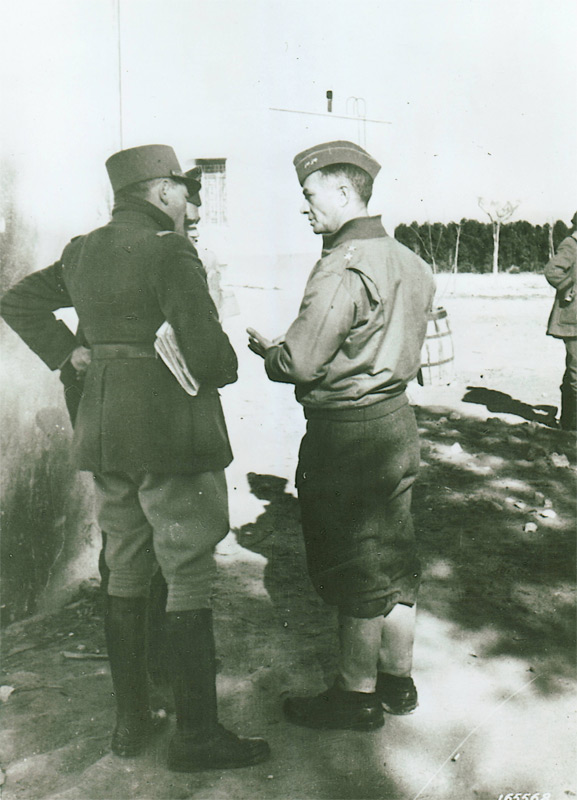
Major General Terry de la Mesa Allen, commander of the 1st Infantry Division, with French officers on the Tunisian front in early 1942. With the bowed stride of a horseman who had been saddle-hardened as a child, Allen was, an aide later observed, “the fightingest man I ever met.”

Brigadier General Theodore Roosevelt, Jr., assistant commander of the 1st Infantry Division, seen here at the Tunisian front. An accomplished author, diplomat, businessman, and soldier, he was erudite and valorous; but in tattered fatigues and wool cap, he could be mistaken for a battalion cook.
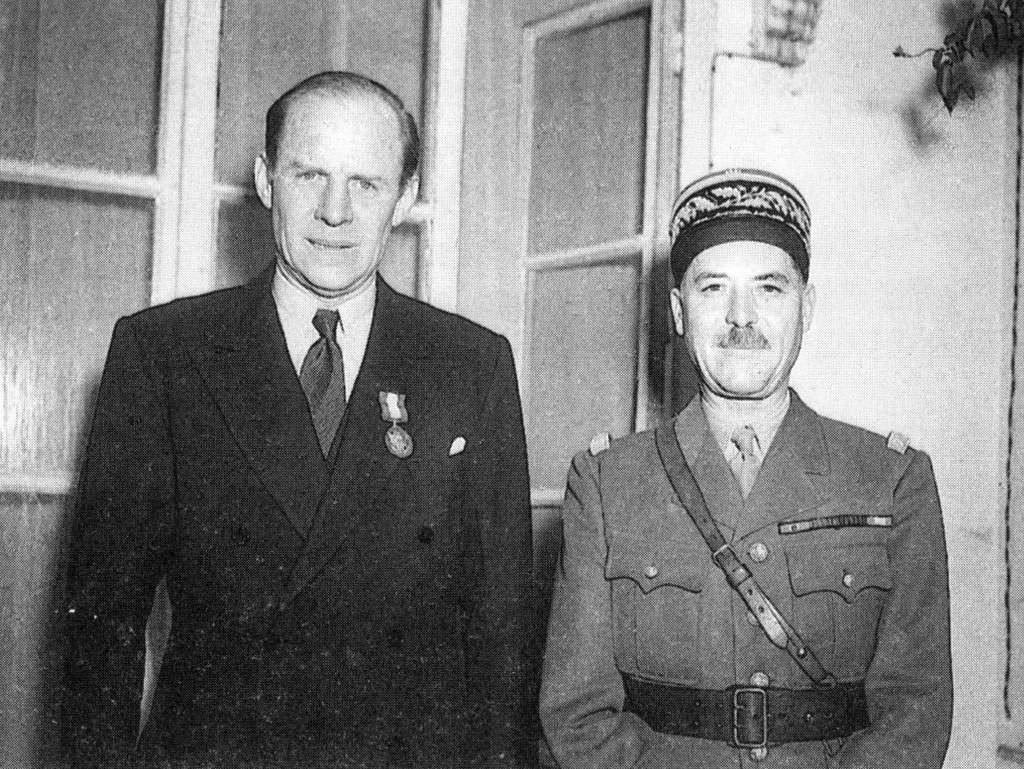
Robert Murphy, the senior American diplomat in Algiers and General Alphonse Juin, commander of French ground forces in North Africa, seen here after the armistice between Vichy troops and the Allies. Murphy is wearing his new Distinguished Service Medal, awarded for his part in Operation TORCH.
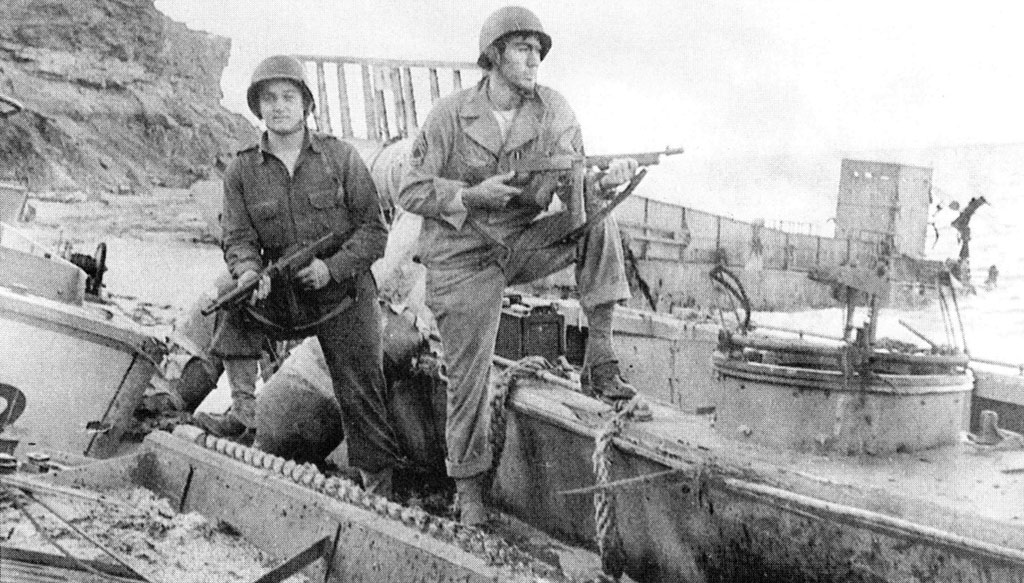
Two soldiers guard a broached landing craft on the Moroccan coast in the early hours of the American invasion. Despite uncommonly calm seas, hundreds of landing craft and lighters were lost in Morocco and Algeria during the operation.

Lieutenant Colonel William O. Darby, commander of the 1st Ranger Battalion, outside Arzew, Algeria. No one who met him ever doubted that he was born to lead other men in the dark of night.

The 1st Ranger Battalion captures a French coastal gun at Arzew, east of Oran, in the early hours of November 8, 1942.

Two Ranger corporals, Robert Bevin and Earl Drost, both from Iowa, cover a French gun battery above Arzew harbor in Algeria on November 8.
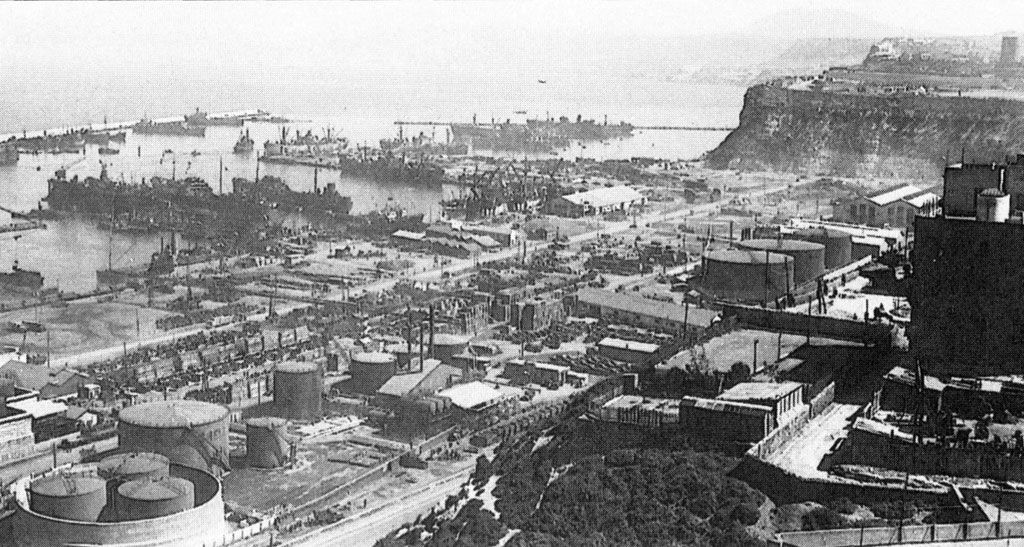
Oren harbor. In Operation RESERVIST, the British cutters Walney and Hartland carried hundreds of American soldiers into the teeth of French defenses before dawn on November 8. The port entrance is visible in the upper center of this photograph, taken six months later.
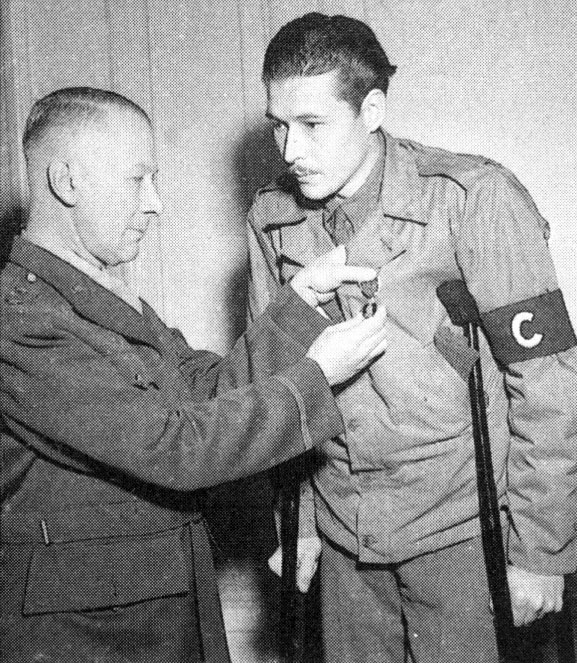
Major General Lloyd R. Fredendall, who later commanded the U.S. II Corps in Tunisia, pins a Purple Heart on correspondent Leo “Bill” Disher. The reporter survived twenty-five wounds, eleven from gunshots and fourteen from shell fragments, during Operation RESERVIST, and later composed a brilliant account of the debacle.

The widow and son of Lieutenant Colonel George F. Marshall receive his posthumous Distinguished Service Cross in a Pentagon ceremony. The senior American commander during Operation RESERVIST, Marshall was last seen on the bow of the British cutter Walney, throwing hand grenades at a French destroyer.
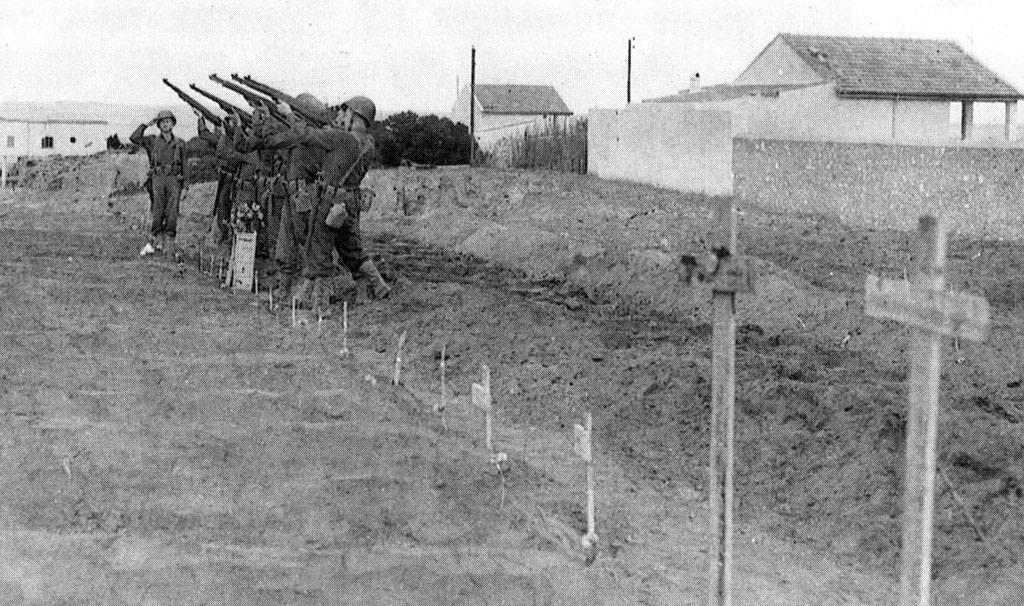
Burying U.S. soldiers killed in action in early December 1942. This temporary cemetery was at Les Andalouses, near Algiers.
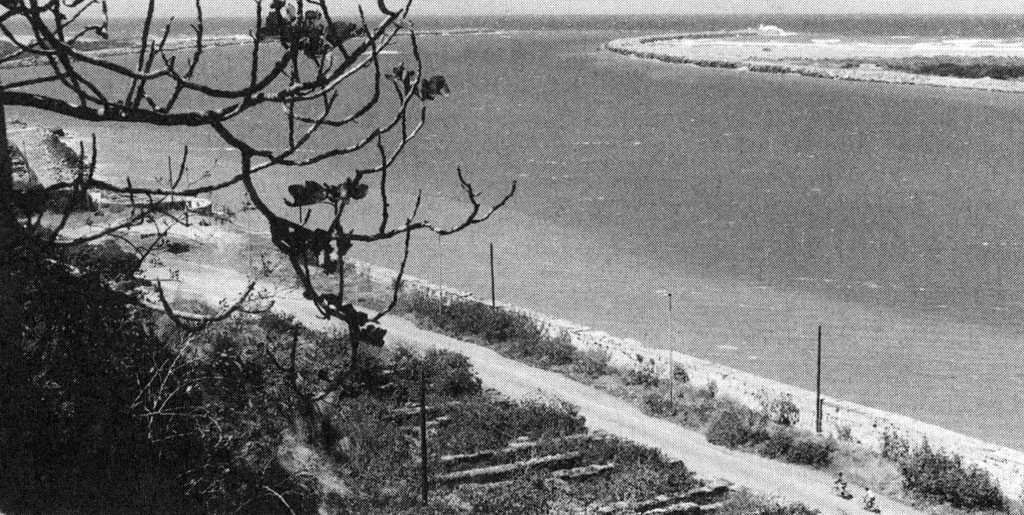
The mouth of the Sebou River, opening onto the Atlantic, as seen from the north wall of the old fortress dubbed the Kasbah. On the road to Port Lyautey, seen passing beneath the fort, Colonel Demas T. Craw was killed in a French ambush. (Collection of the author)

After three days of shelling and dive bombing by U.S. Navy planes, the Kasbah lies in ruins. The U.S. Army, which suffered more than three hundred casualties in the attack on Mehdia and Port Lyautey, conceded that “the final assault had touches of Beau Gestse.”
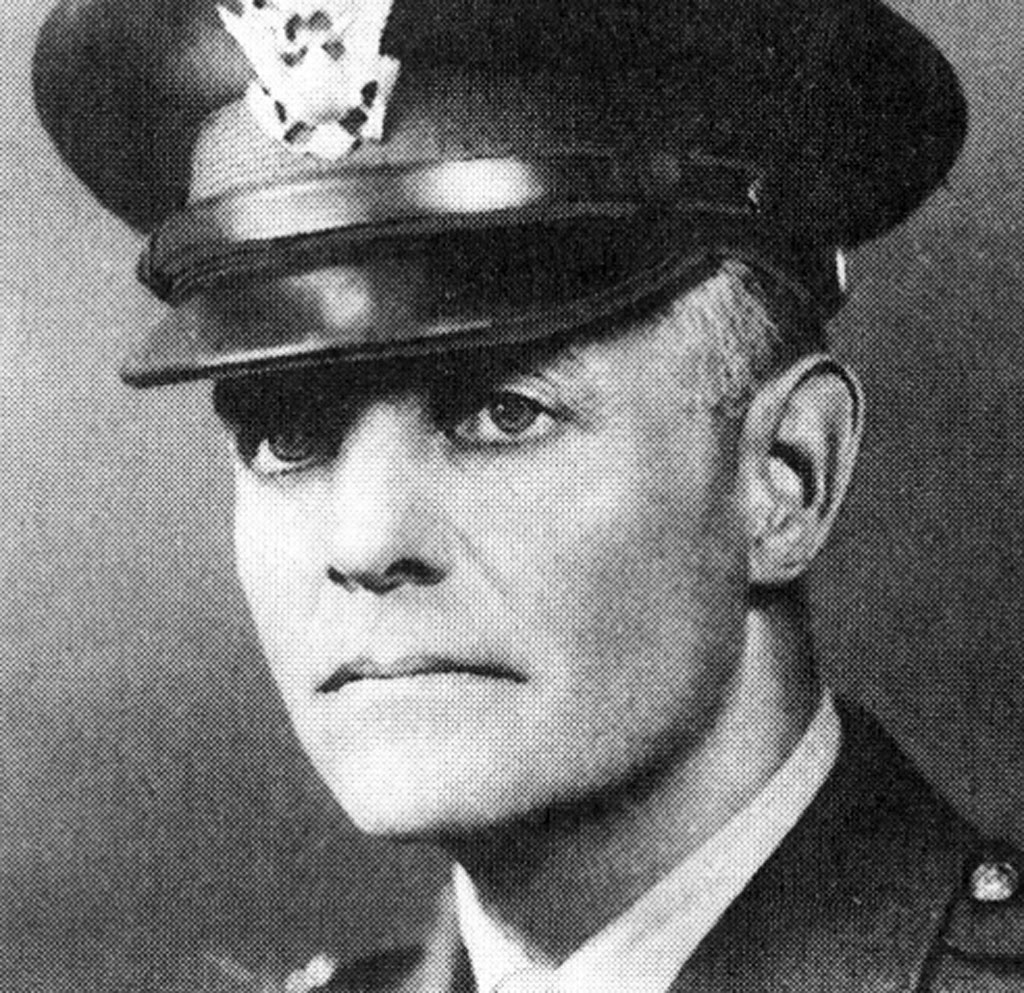
Brigadier General Lucien K. Truscott, Jr., commanded the attack force that invaded Mehdia in northern Morocco and later ran General Eisenhower’s forward headquarters during the battle for Tunisia. Chesty and slightly stooped, he had protruding gray eyes, a moon face, and a voice as raspy as a wood file.
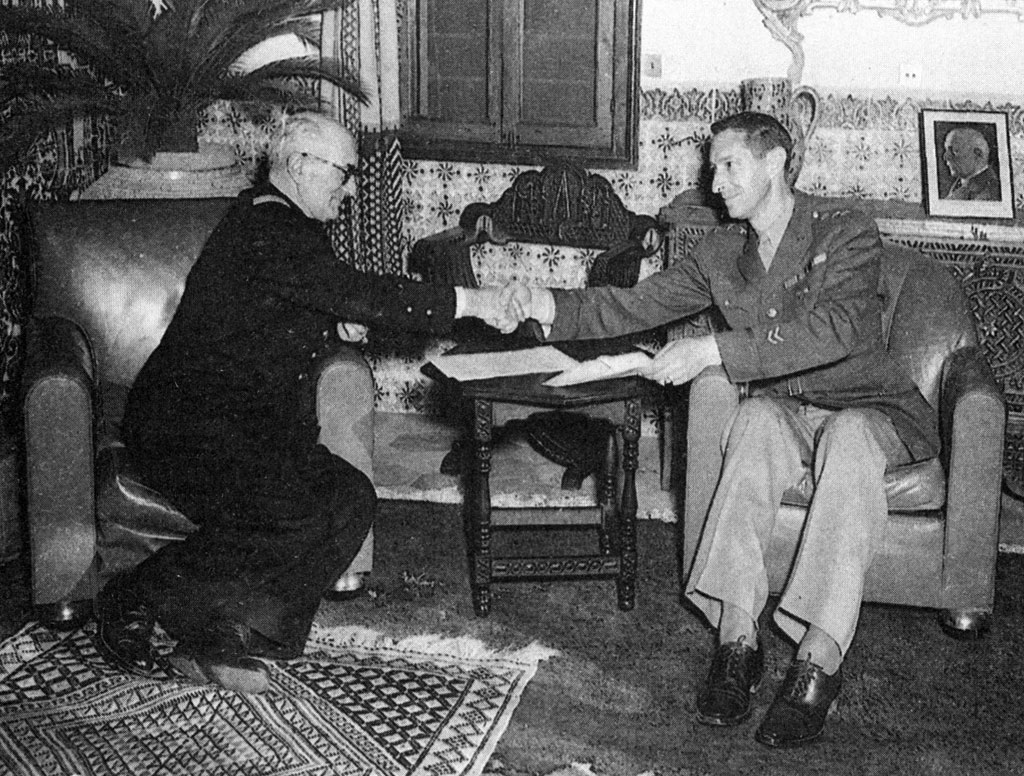
Admiral Jean Darlan (left), commander of the Vichy French armed forces, shares a cup of coffee in Algiers on November 22, 1942, with Lieutenant General Mark W. Clark after the formal signing of a contraversial armistice between Allied and Vichy forces in North Africa. A photograph of Marshal Petain looks over Clark’s shoulder.
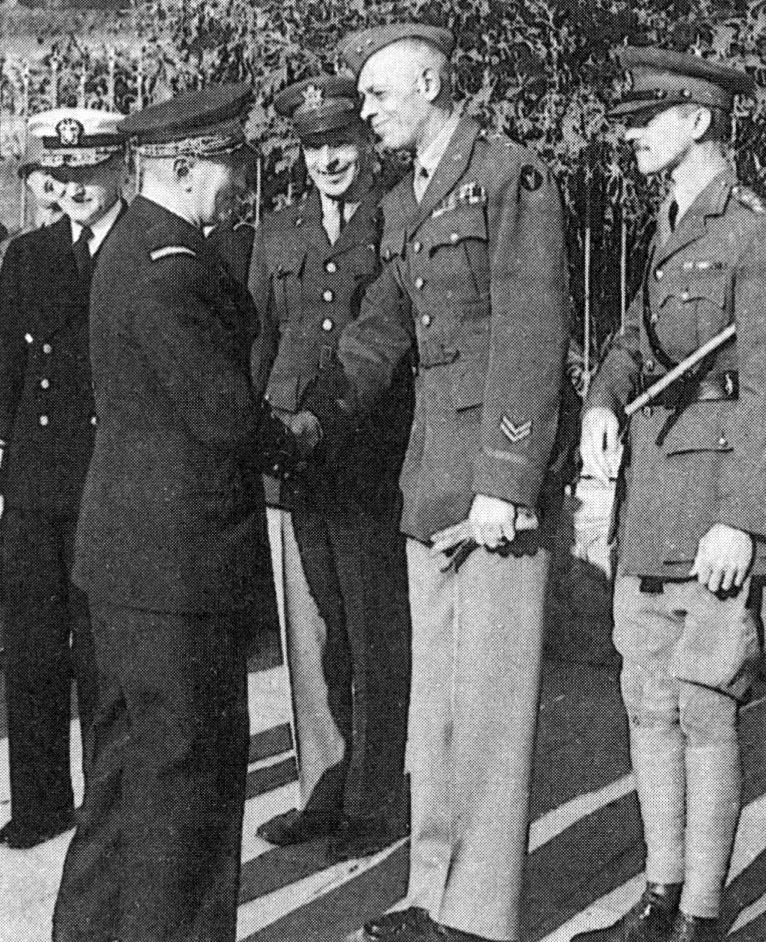
Darlan shaking hands with Major General Charles W. Ryder, commander of the U.S. 34th Infantry Division, during a ceremony in Algiers on December 1, 1942. Between them in the background is Brigadier General Lyman L. Lemnitzer, a staff officer who later became chairman of the U.S. Joint Chiefs of Staff.
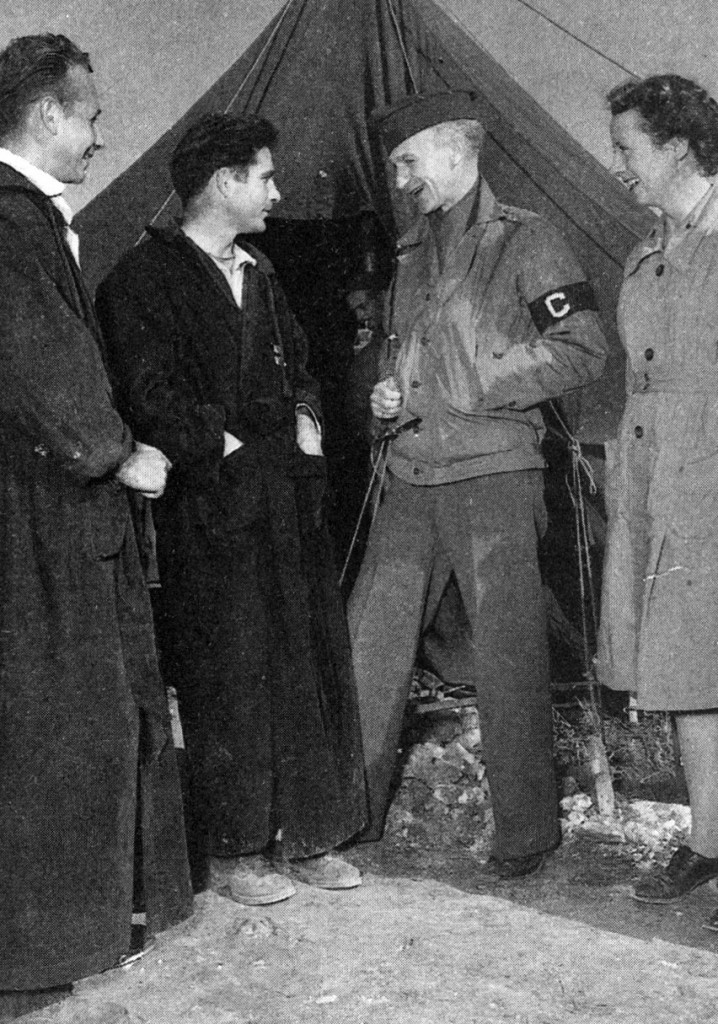
Correspondent Ernie Pyle, slender as a thread at one hundred pounds and given to drink and melancholy, arrived in North Africa with a typewriter to educate America about the war. Here he is seen with wounded soldiers at a hospital near St. Cloud, Algeria, in early December 1942.
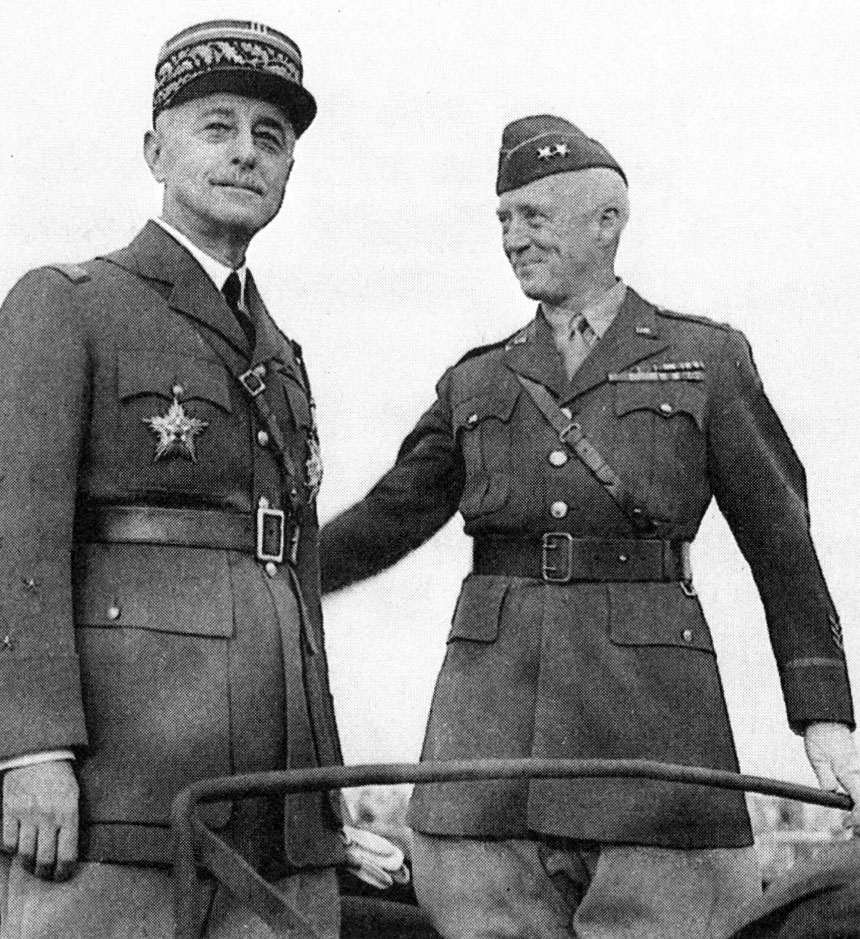
General Auguste Paul Nogues (left), the French resident-general of Morocco, and Major General George S. Patton, Jr., at a parade in Rabat after the armistice between allied and Vichy forces. Nogues, a slippery equivocator known to the Allies as “No-Yes,” had led French resistance to the American invasion in three days of bloody fighting.
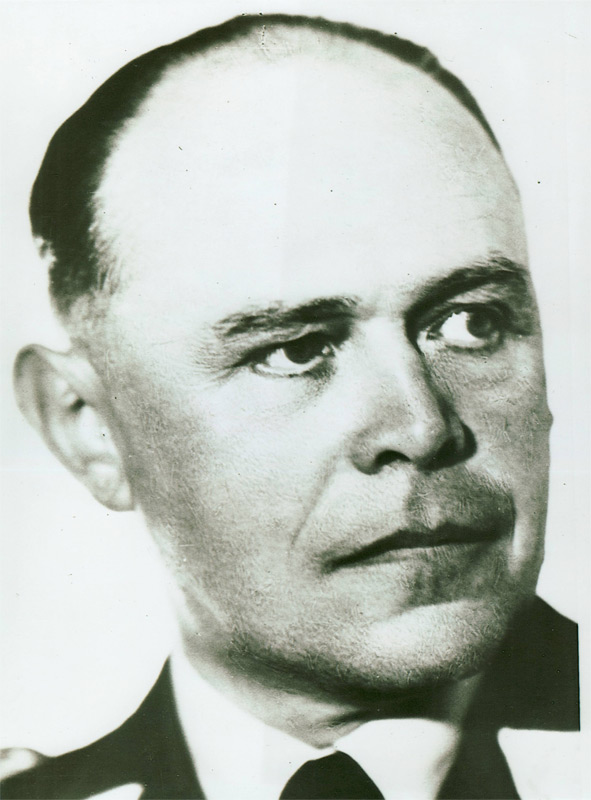
Field Marshal Albert Kesselring was given a “free hand” by Hitler in repelling the Allied invasion of North Africa. Known as Smiling Albert for his toothy grin and unquenchable optimism, he had orchestrated the terror bombings of Warsaw, Coventry, and many cities in between.
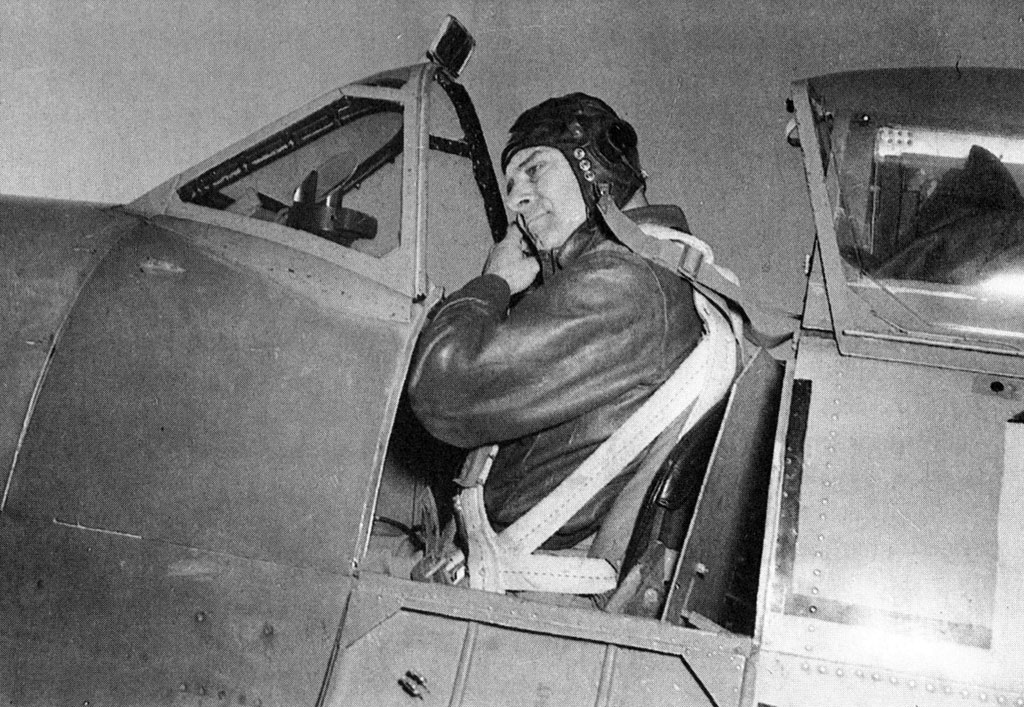
Major General Jimmy Doolittle, commander of the U.S. air forces in North Africa and winner of the Congressional Medal of Honor for his raid on Japan in April 1942. Seen here in a Spitfire cockpit before a reconnaissance flight from Algiers on December 21, 1942. Doolittle initially was disliked by Eisenhower, who also resented the amount of time he spent flying.

A few of the eight thousand mourners who filed past Admiral Darlan’s bier on Christmas Day, 1942, a day after his assassination. “Not a tear was shed,” one correspondent wrote. Darlan’s naval cap is perched on the casket.

Picking through the wreckage of an Merican B-17 Flying Fortress destroyed in a Luftwaffe raid on an Algerian airfield, January 9, 1943. Costly German raids forced all B-17’s westward to safer fields near Oran, which meant a twelve hundred-mile roundtrip bombing run to Tunis.
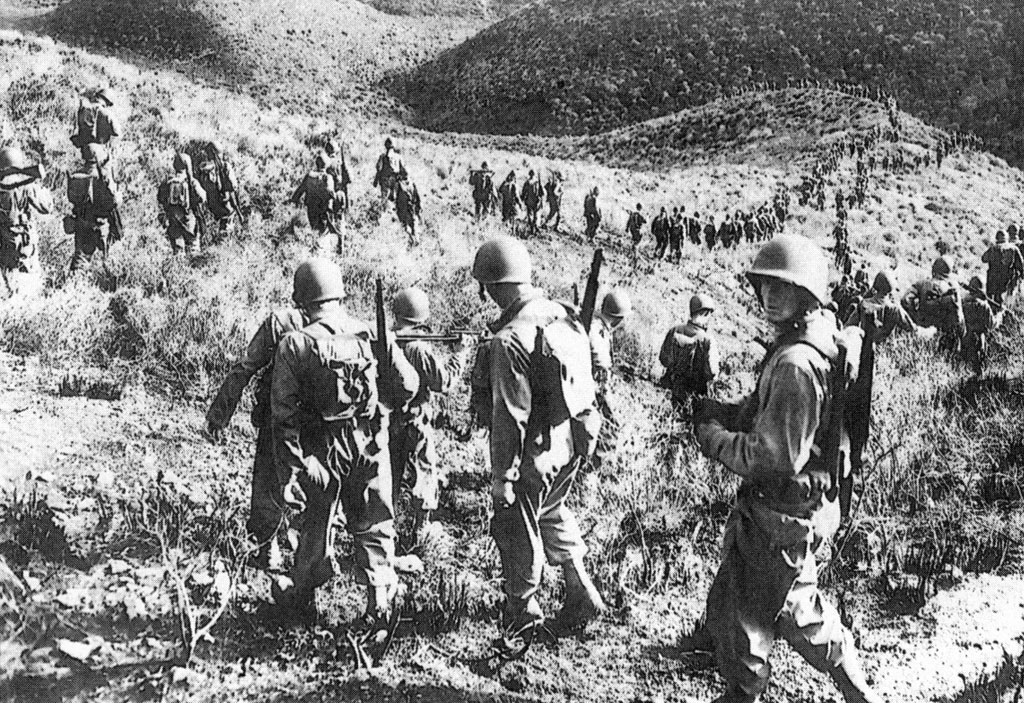
The 1st Ranger Battalion marching over hilly Algerian terrain in late January 1943, shortly before the raid against an Italian outpost at Sened Station in southern Tunisia.
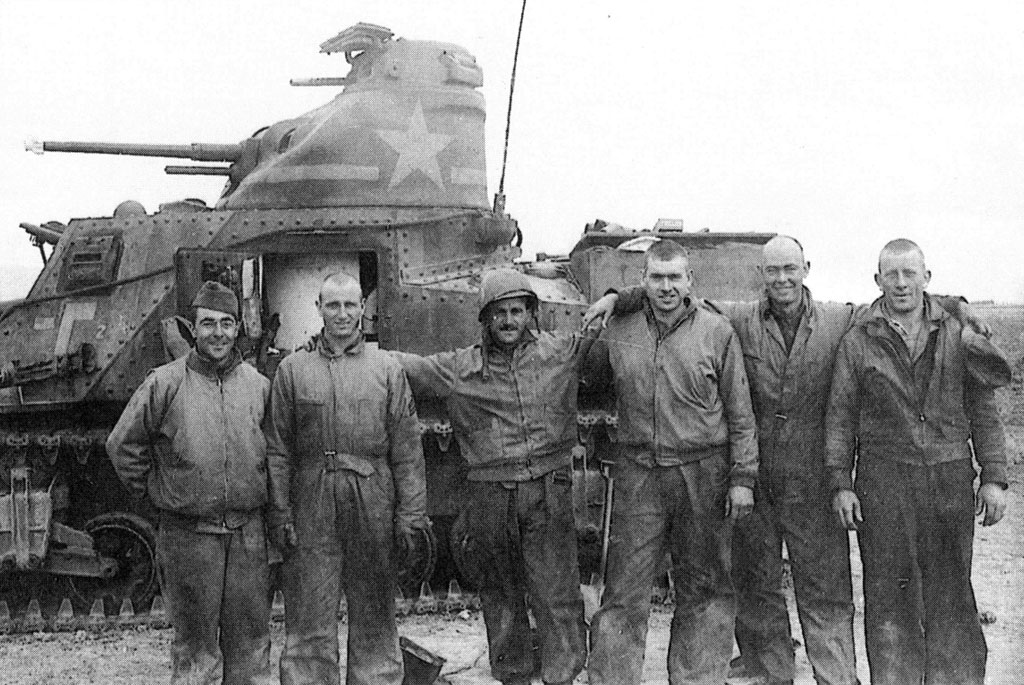
An American tank crew from the 2nd Battalion of the 1st Armored Regiment, in Tunisia, February 1943. At more than ten feet tall, the M-3 General Lee “looked like a damned cathedral coming down the road,” one tanker complained.
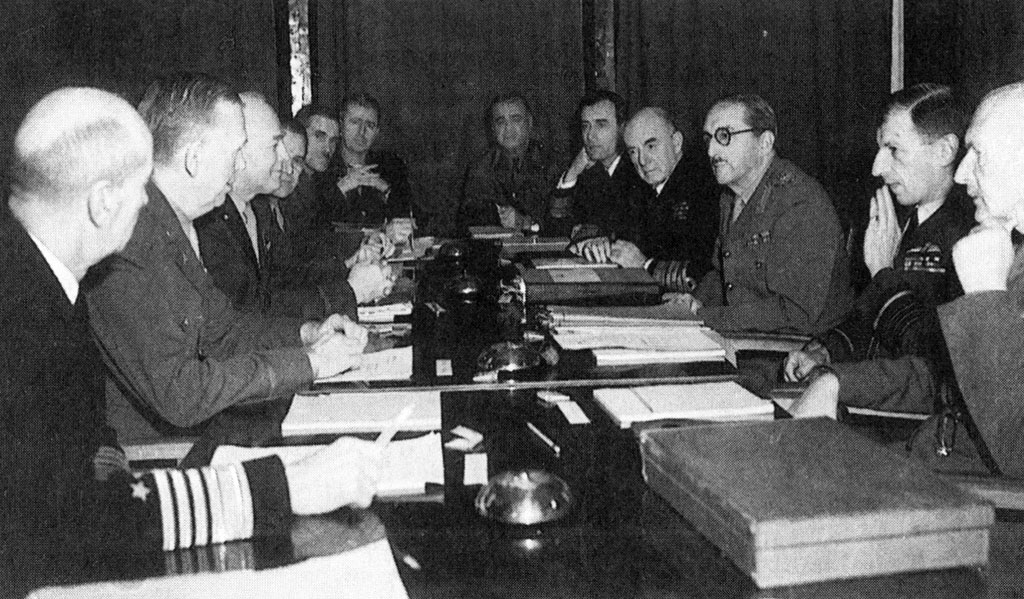
The Anglo-American combined chiefs of staff in the Anfa Hotel conference room outside Casablanca, January 1943. Visible from the left are the American chiefs: Admiral Ernest J. King, General George C. Marshall, and General H. H. “Hap” Arnold. On the far right is Field Marshall John Dill, the senior British officer in Washington, and then the British chiefs: Air Marshal Charles F.A. Portal; General Sir Alan Brooke, chief of the Imperial General Staff; Admiral Dudley Pound; and Vice Admiral Louis Mountbatten, commander of British combined operations.
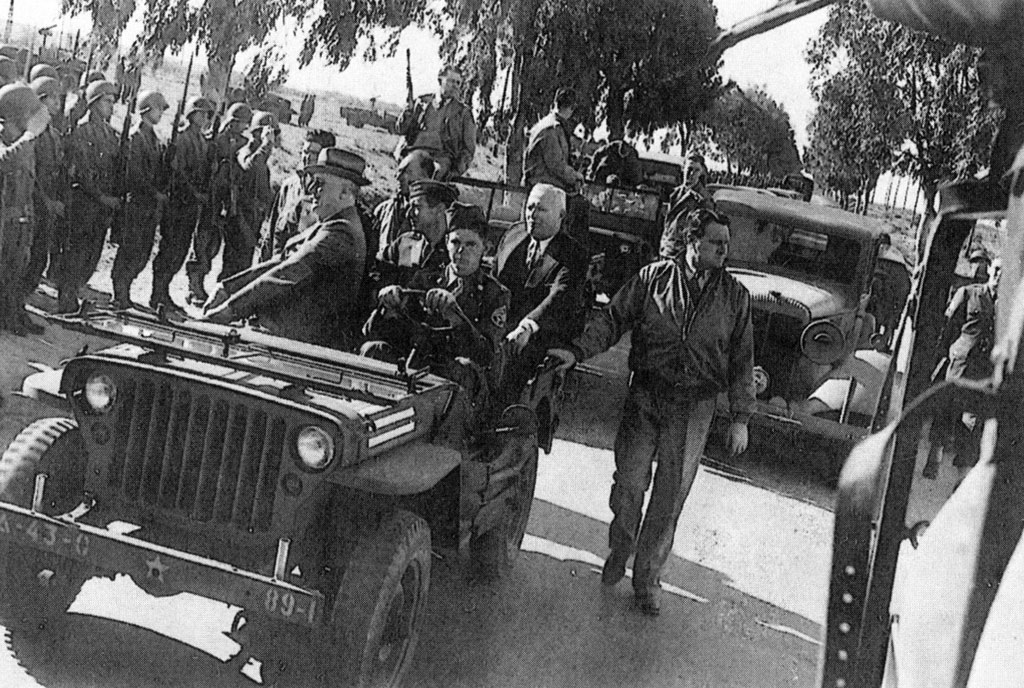
President Roosevelt inspects U.S. troops during the Casablanca Conference, January 21, 1943. Lieutenant General Mark W. Clark is in the rear seat of the Jeep, which is followed by Secret Service agents. “They are a bunch of cheap detectives,” Patton complained of the agents, “always smelling of drink.”
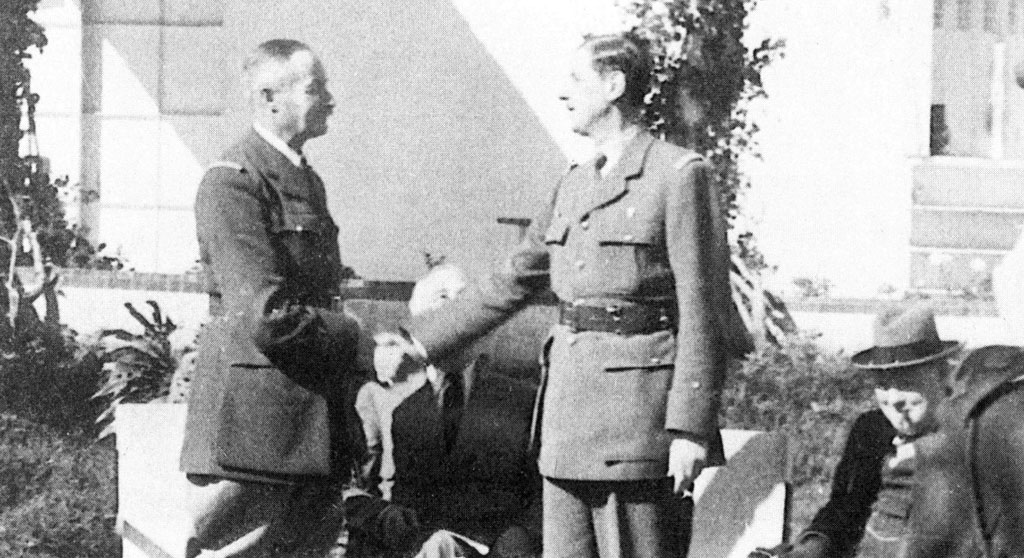
The handshake seen round the world: on January 24, 1963, at the end of the Casablanca Conference, General Henri Giraud (left) and General Charles de Gaulle, who detested each other, pose for the cameras at the insistence of Roosevelt, partly obscured between them, and to the amusement of Prime Minister Winston S. Churchill.

Correspondents and photographers gather on the lawn outside Villa Dar es Saada on January 24, 1943, to hear Roosevelt and Churchill discuss the Casablanca Conference, which had just ended. The president, to Churchill’s surprise, has just announced the “unconditional surrender” by the Axis powers was the only acceptable way to end the war.
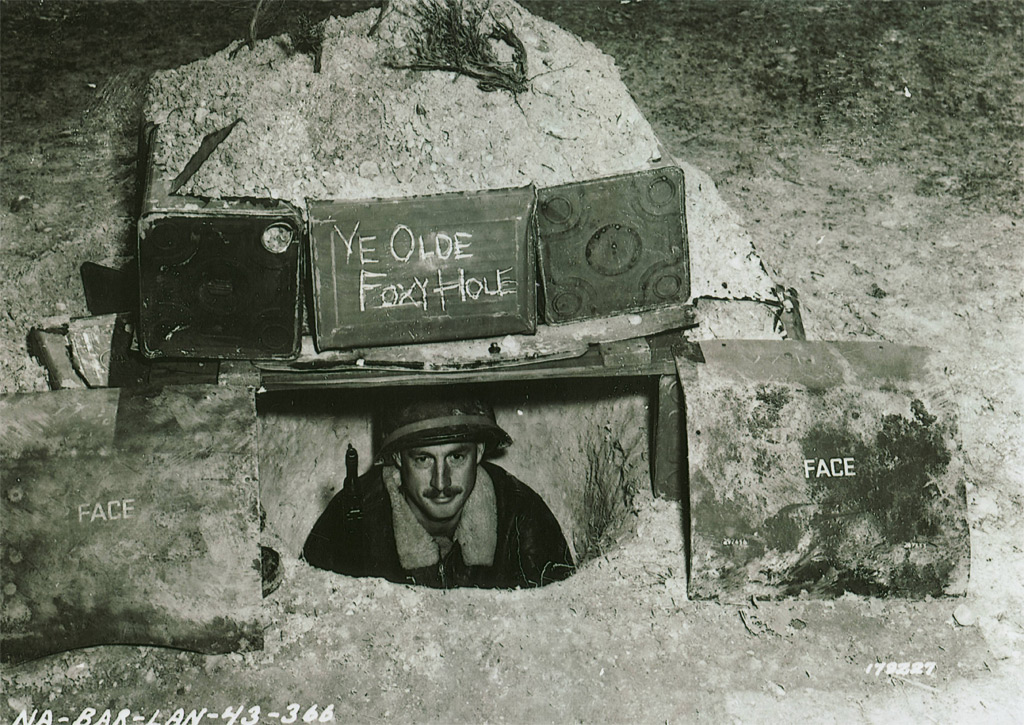
Earl Van Derreer, a technical sergeant from California with the U.S. 14th Fighter Group, in his burrow at Youks les Bains, Algeria, in January 1943.
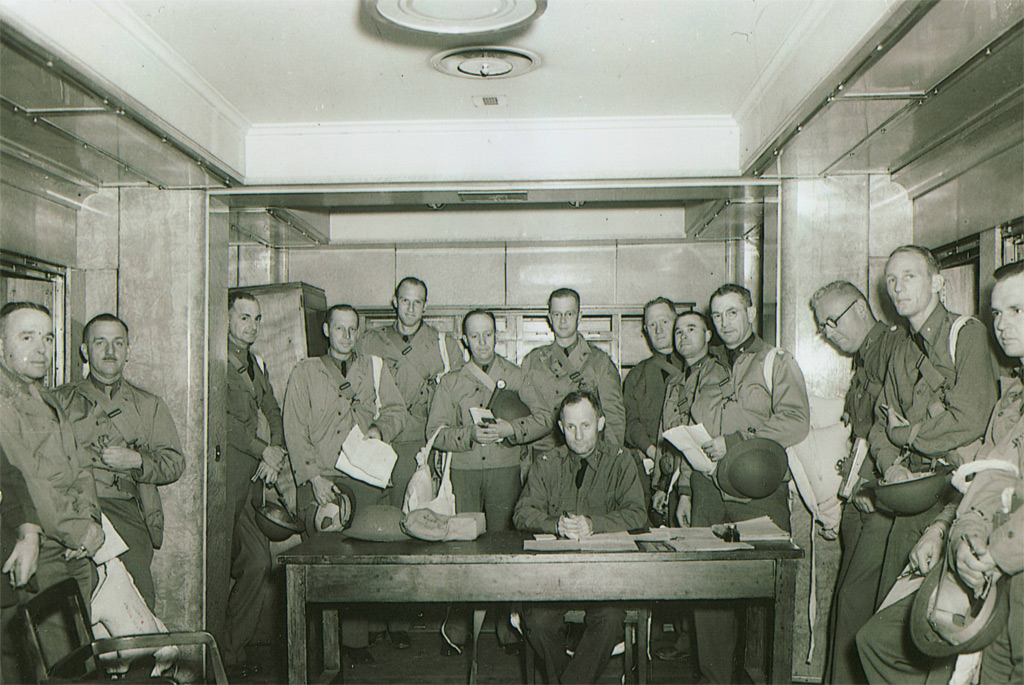
Colonel Paul McD. Robinett, seated, during passage to Northern Ireland in May 1942. Commander of the 13th Armored Regiment and later, as a brigadier general, of Combat Command B of the 1st Armored Division, Robinett was five feet four inches tall, with a cavalry strut and impressive tactical skills; he also “annoyed everyone” with his fussy and divisive arrogance.
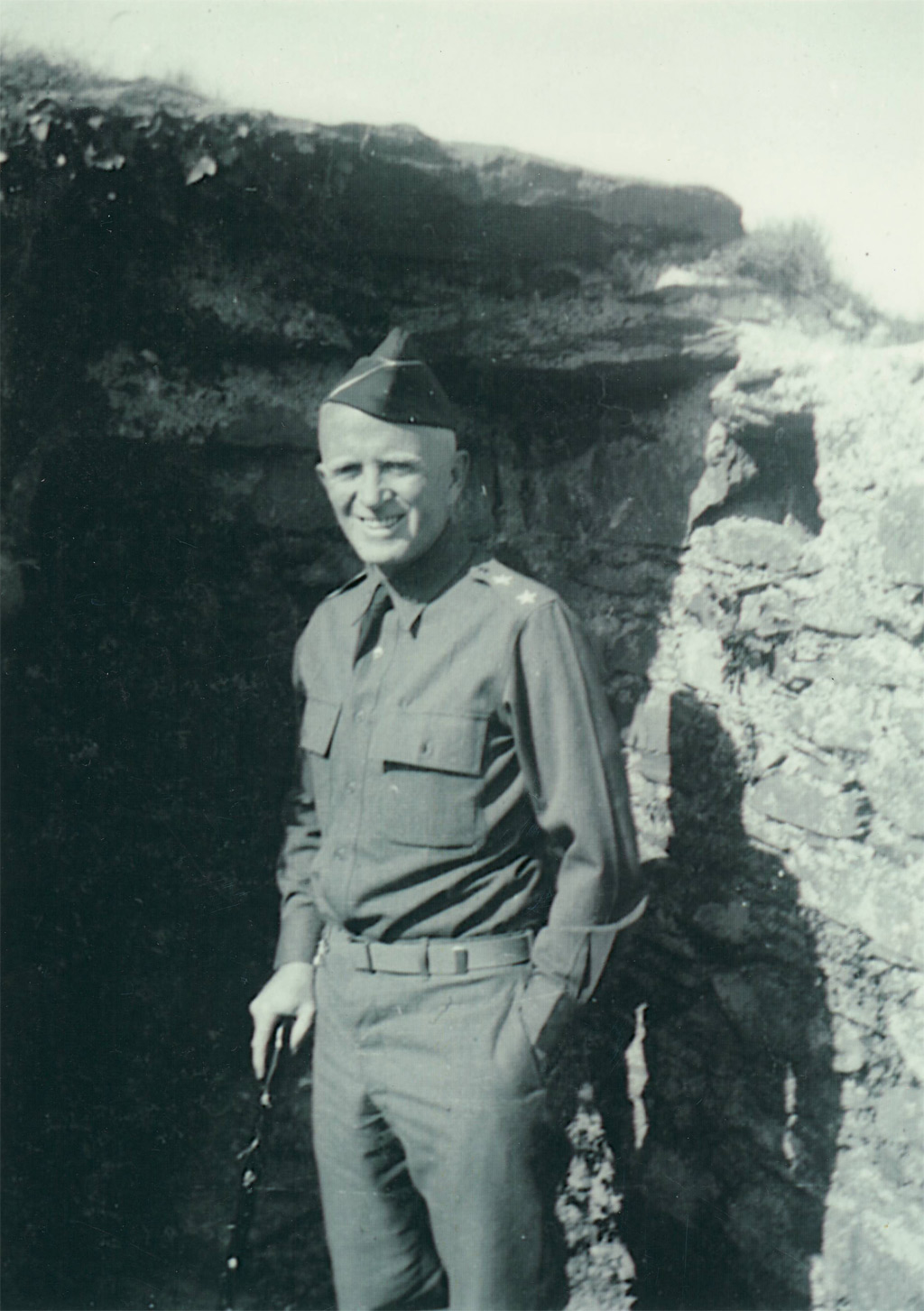
Major General Orlando Ward, commander of the U.S. 1st Armored Division, in Northern Ireland shortly before leaving for North Africa. Known as “Pinky” for his once reddish hair, he was capable, ambitious, highly sensitive, and deeply suspicious of the British. (Courtesy of the Ward family)
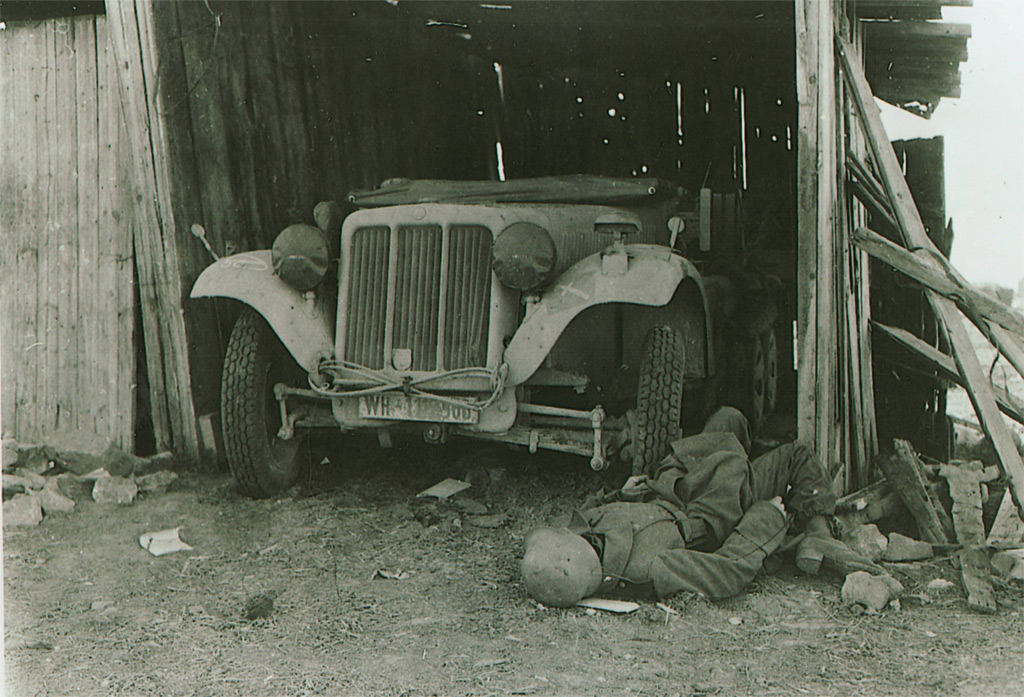
A dead German soldier after the battle for the Sened Station in southern Tunisia, in early February 1943.

Crewman with an American anti-tank gun watch for attacking German tanks near Sidi bou Zid, February 14, 1943, in the early hours of the Axis counteroffensive that led to Kasserine Pass.
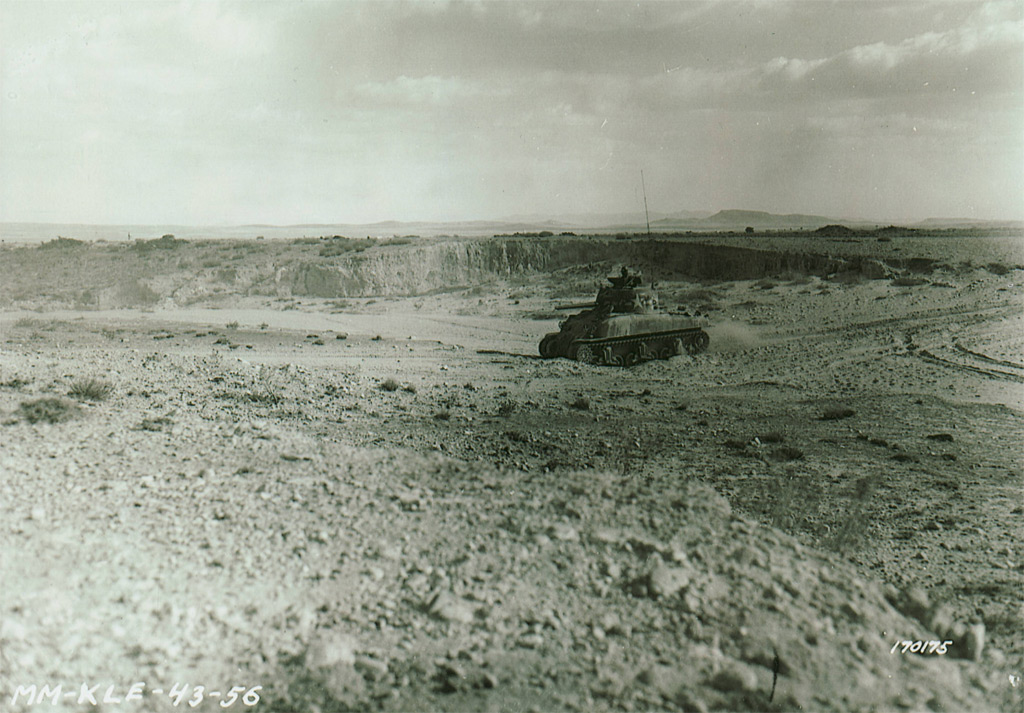
An American M-3 tank crosses a wadi outside Sidi bou Zid on the morning of February 14, hours before the Germans completed their double envelopment of the town.
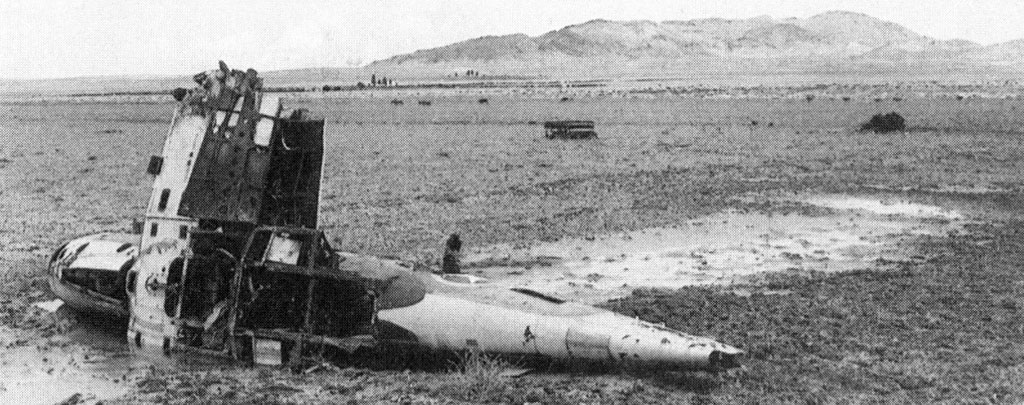
The wreckage of an American P-38 fighter near Sidi bou Zid. In the distance looms Djebel Lessouda, where John Waters was captured and Robert Moore escaped with part of his battalion.
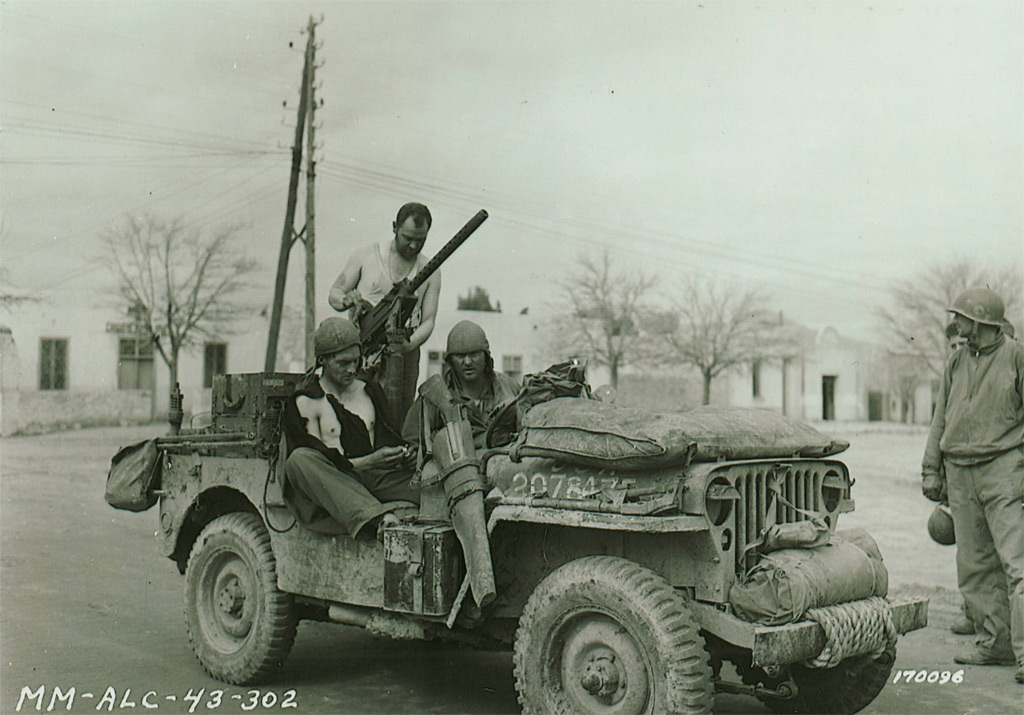
Three battered GIs return to American lines after being trapped behind German positions for three days near Sidi bou Zid.
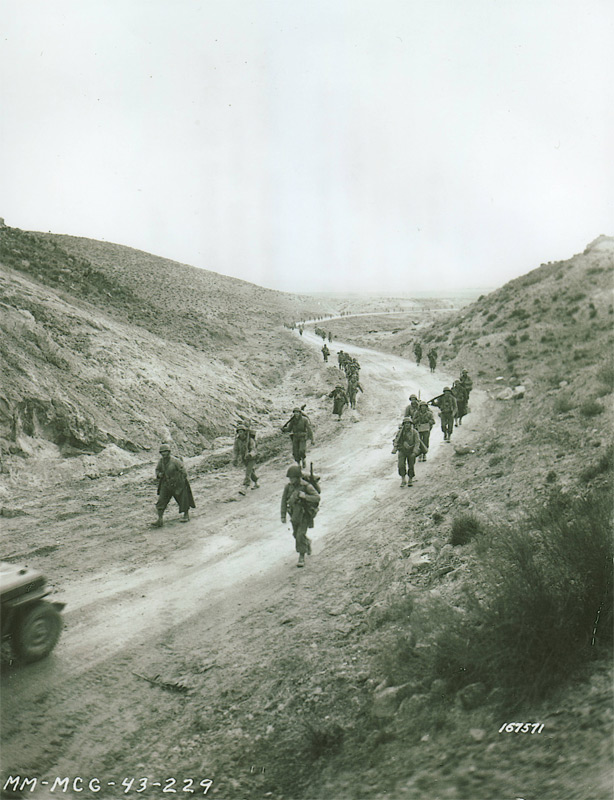
Soldiers from the 2nd Battalion of the 16th Infantry Regiment-part of Terry Allen’s 1st Division-head east through Kasserine Pass on February 26, 1943, after Rommel’s withdrawal.

Major General Ernest N. Harmon, sent by Eisenhower to Tunisia during the Kasserine Pass debacle, returned six weeks later to command the 1st Armored Division. Blunt and barrel-chested, he once was described as “a cobra without the snake charmer.”
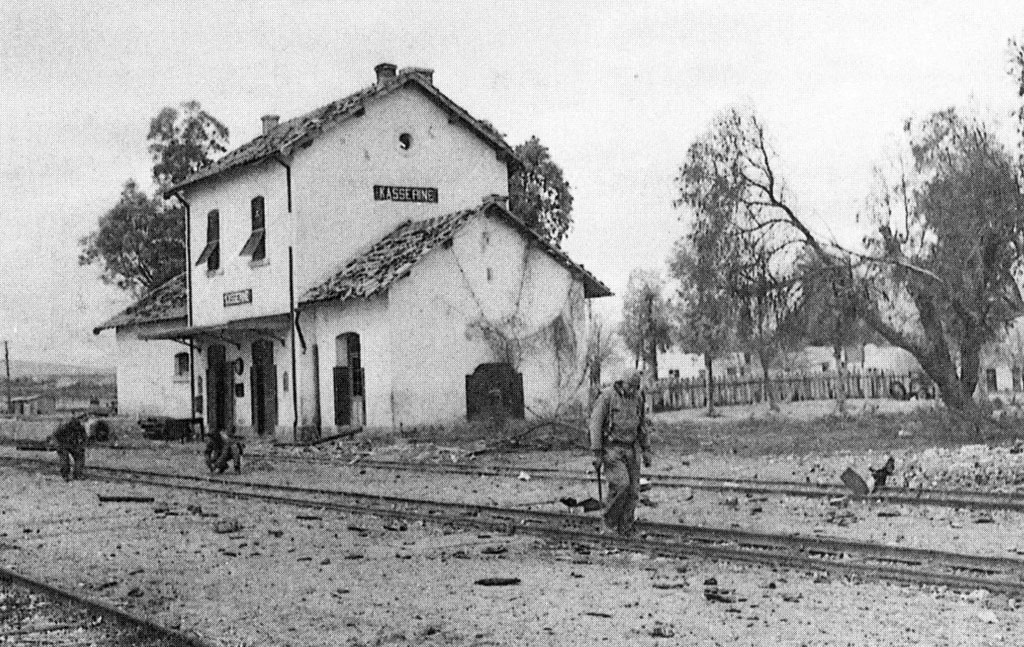
American combat engineers search for mines at the Kasserine train station, February 26, 1943. Rommel’s withdrawing soldiers planted more than 43,000 mines, forcing American troops to “spread out like caddies and golders looking for a lost ball.”
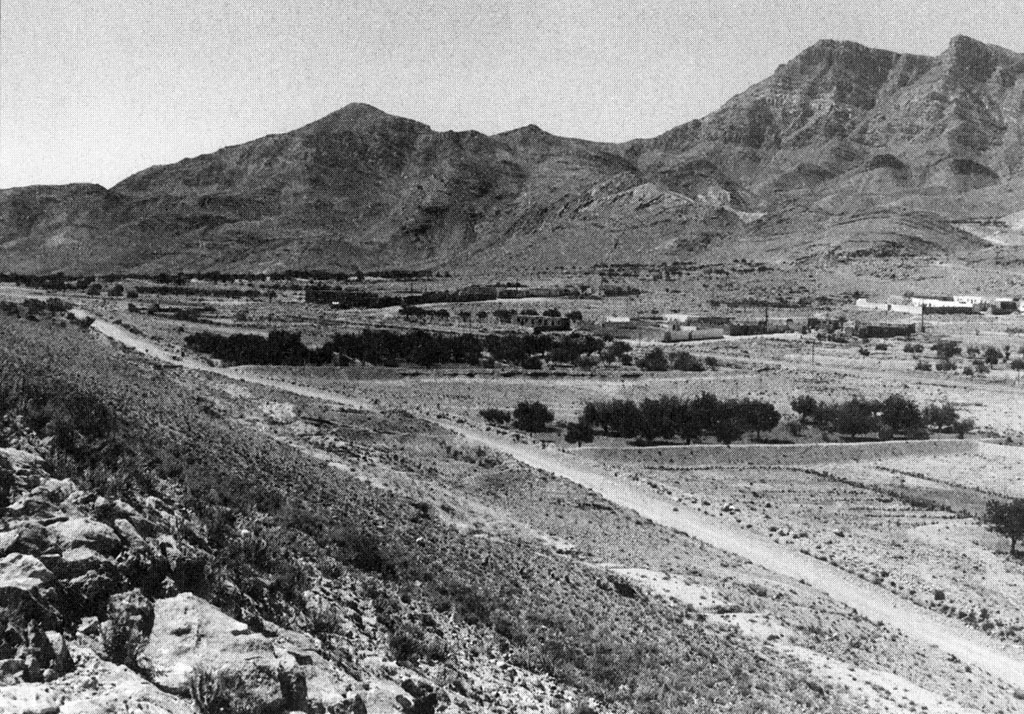
Across Gumtree Road lies Djebel Orbata, where Darby led his Rangers across the hills east of El Guettar to fall on the Italians from the rear on March 20-21, 1943. (Collection of the author)
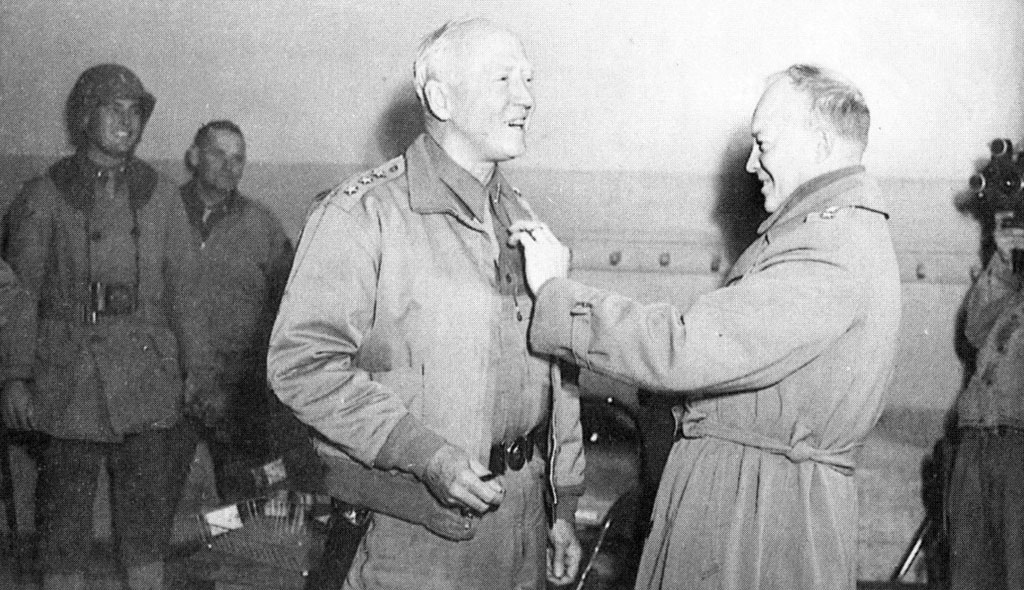
On March 16, 1943, on the eve of the II Corps attack on Gafsa, Eisenhower pins a third star on buoyant Patton to mark his promotion to lieutenant general. One officer said of the new II Corps commander, “Bedizened with stars and loaded with guns, he came with Marsian speech and a song of hate.”
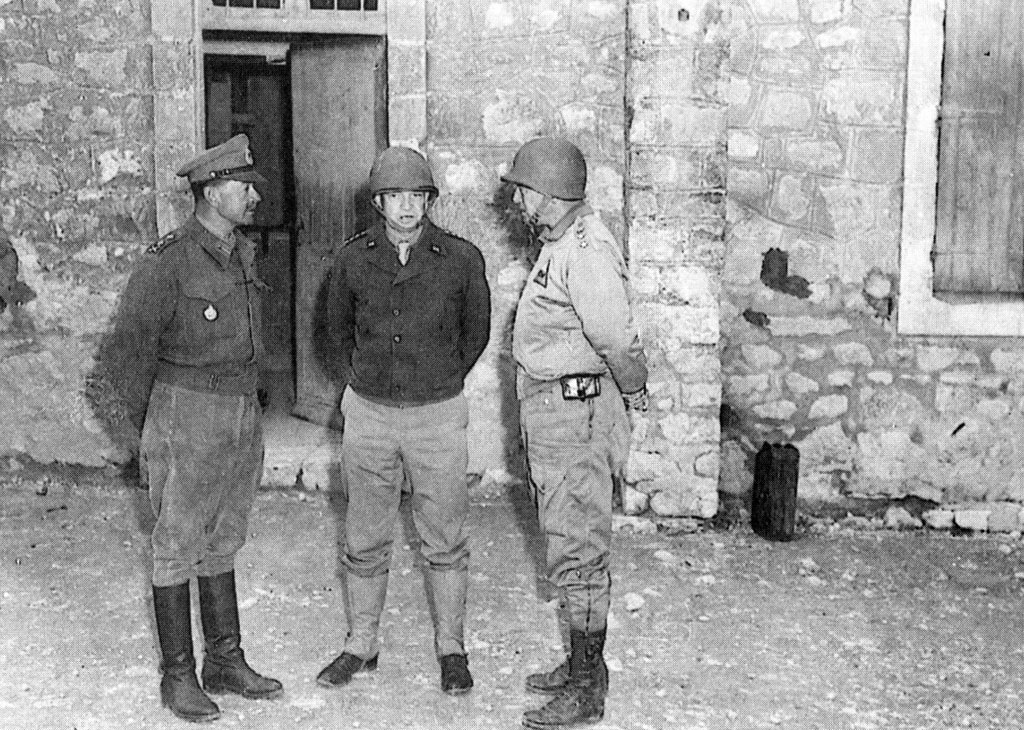
Field Marshal Harold Alexander (left), commander of the new 18th Army Group, with Eisenhower (center) and Patton during their first collective meeting, in Feriana, on March 17, 1943, the day the American attack began on Gafsa and El Guettar.
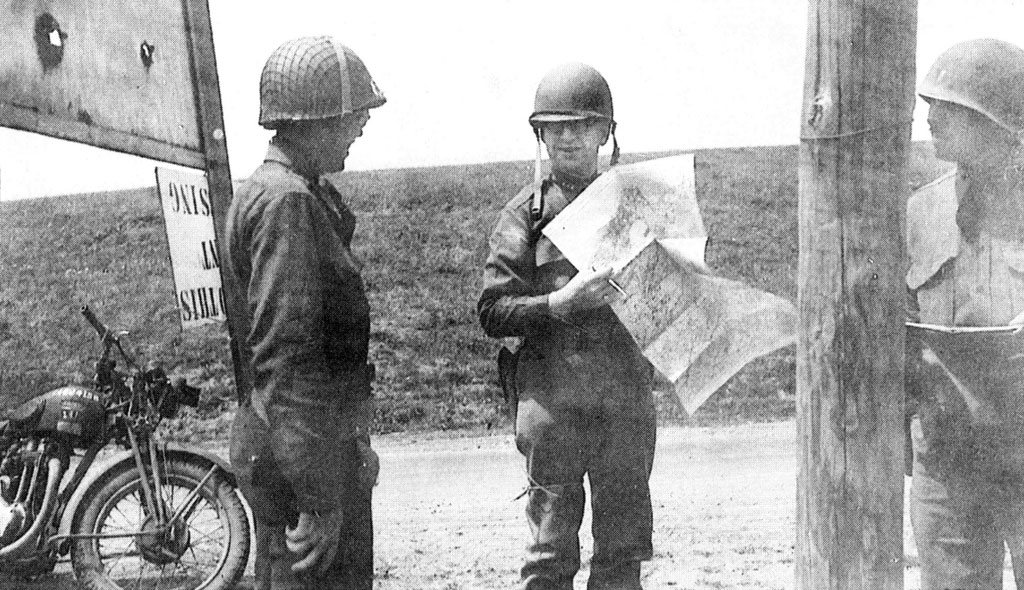
Lieutenant General Lesley J. McNair (center), commander of U.S. Army Ground Forces, at the Tunisian front on April 22, 1943, the day before he was badly wounded by a German shell.

Major General Walter B. “Beetle” Smith, Eisenhower’s capable if irascible chief of staff, in his Algiers office, March 1943.
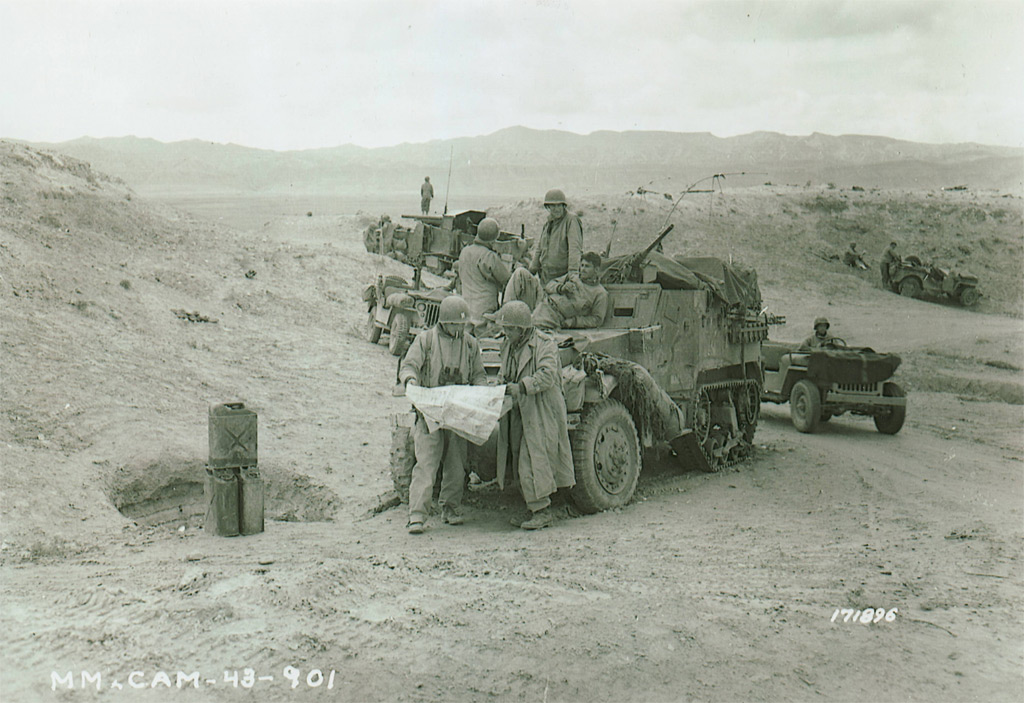
An American tank destroyer battalion on reconnaissance at El Guettar on March 23, 1943, during the spoiling attack by the German 10th Panzer Division.
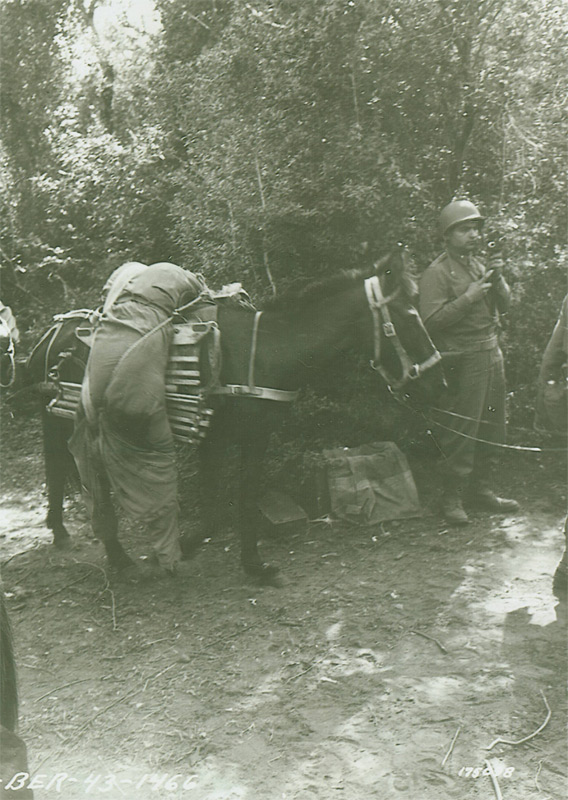
The bodies of American soldiers killed in action brought down from the hills of northern Tunisia by mule, April 25, 1943.
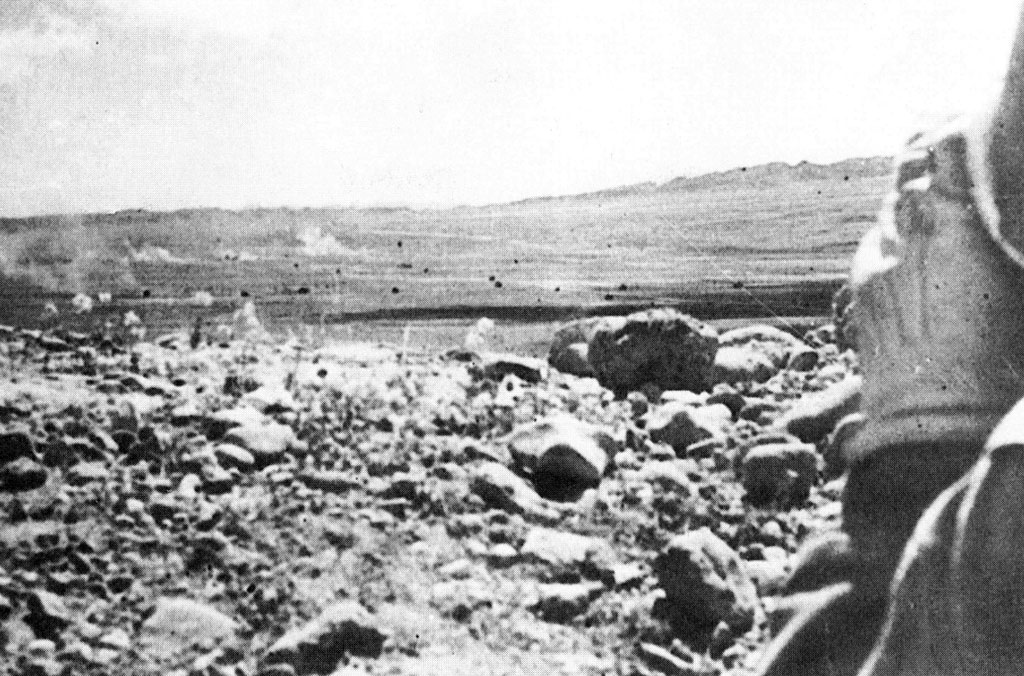
American artillery detonates around attacking German tanks of the 10th Panzer Division near El Guettar on April 23, 1943. After hours of savage fighting, Ted Roosevelt reported that the enemy “hesitated, turned around, and retreated. The men around me burst into cheers.”
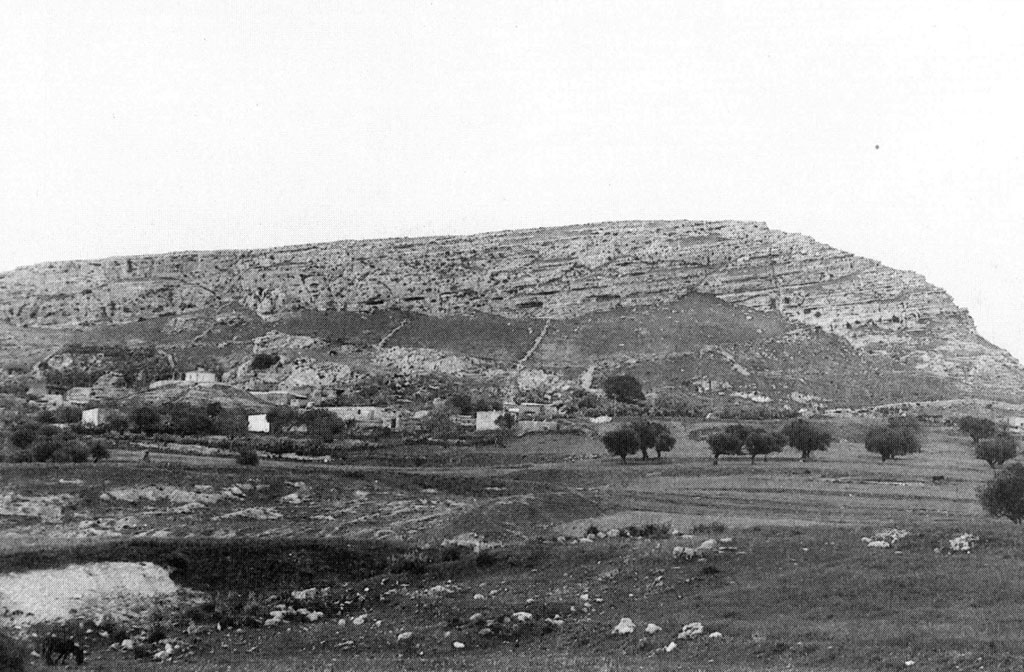
Hill 609, as soldiers from the 34th Infantry Division saw it in their approach from the west. Wind tossed the yellowing wheat on the lower slopes, making the hill undulate like a great breathing thing. (Collection of the author)
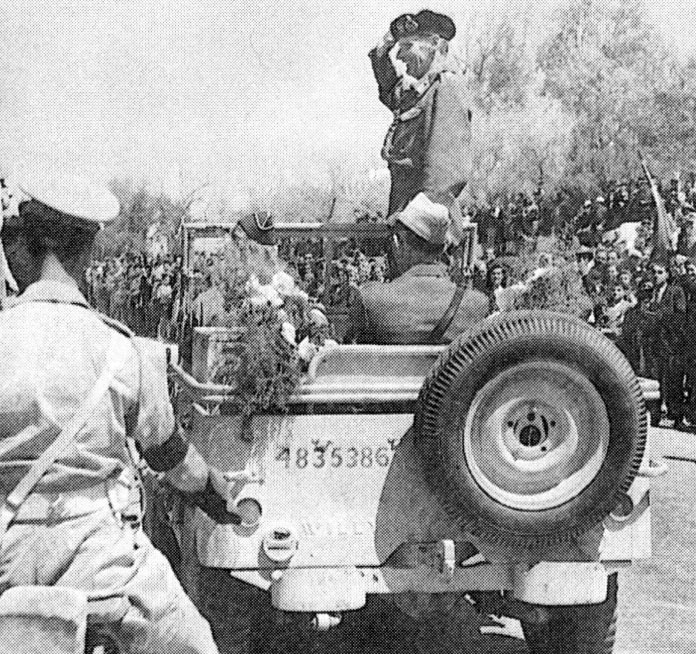
General Bernard L. Montgomery salutes the cheering throng in Sousse after the port town was liberatin in April 1943. Once described by George Bernard Shas as “that intensely compacted hank of steel wire,” Montgomery provoked Eisenhower to complain, “I can deal with anybody except that son of a bitch.”
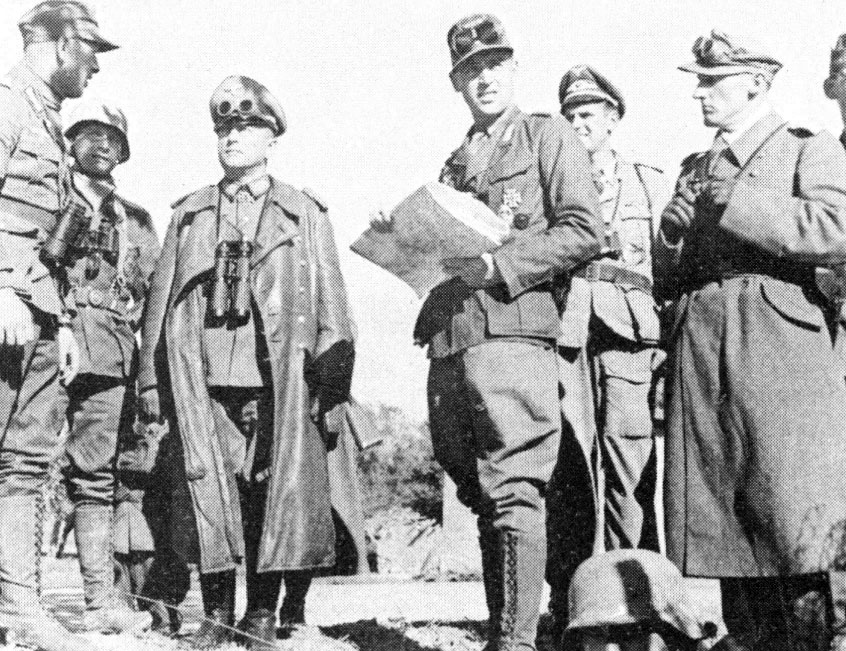
Field Marshal Erwin Rommel (third from left) and his staff in Tunisia in early 1943, from captured German photo negatives. “Rommel, Rommel, Rommel!” Churchill had exclaimed. “What else matters but beating him?”
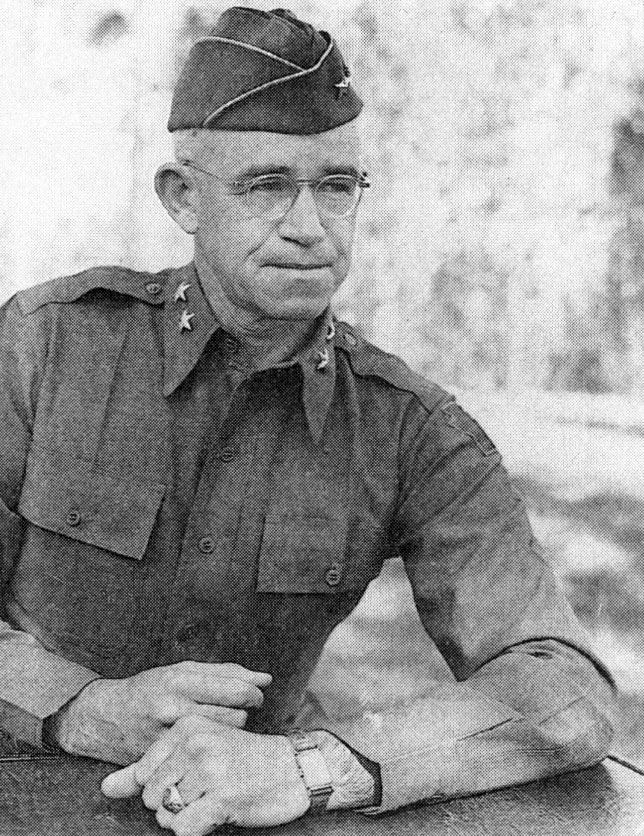
Major General Omar N. Bradley shortly before leaving for Africa, where he eventually succeeded Patton as commander of the U.S. II Corps. A prim, severe Missourian who was described as “the least dressed-up commander of an American army in the field since Zachary Taylor,” he likened rooting Axis troops from the Tunisian hills to “hunting wild goats.”
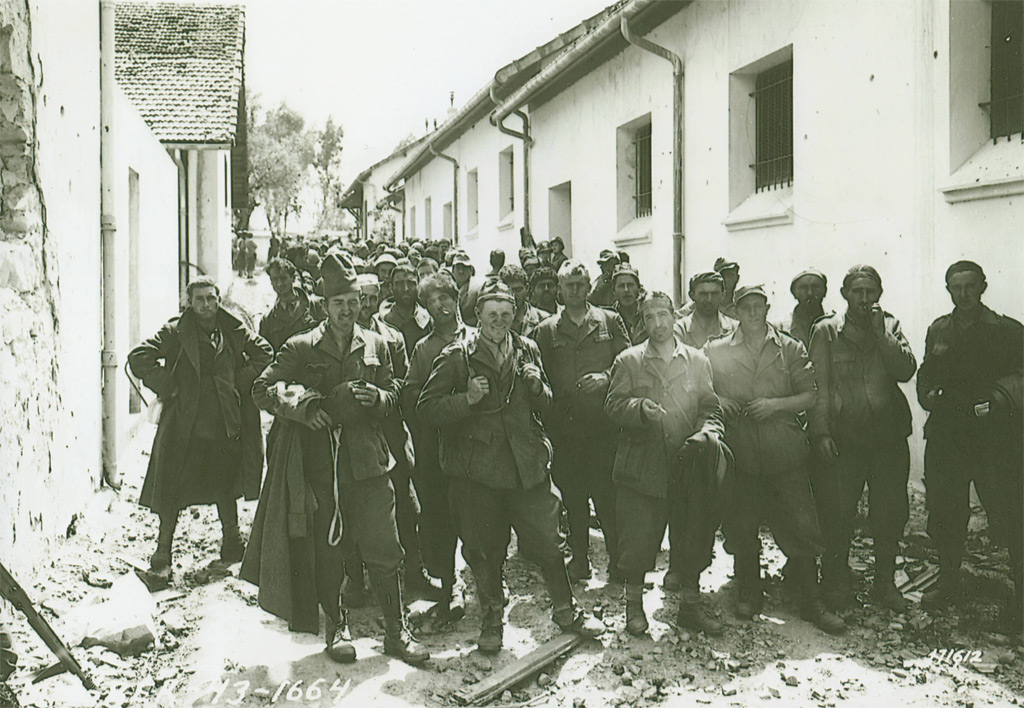
Italian prisoners captured by the 9th Infantry Division along the north coast of Tunisia, May 1, 1943.
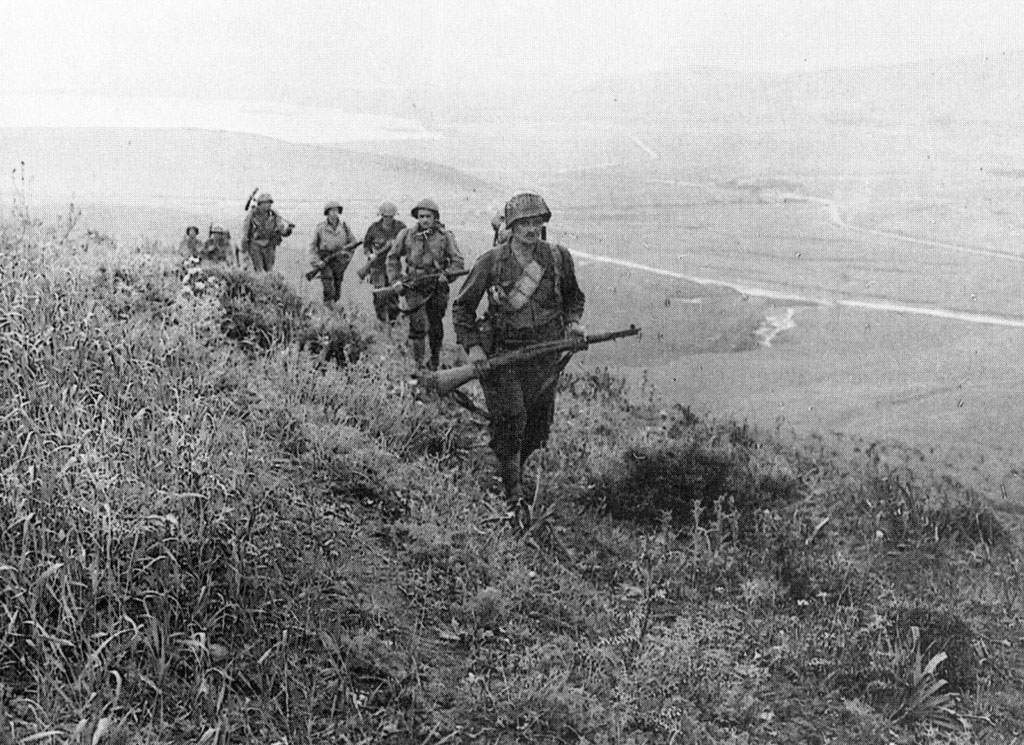
Soldiers from the 60th Infantry Regiment of the 9th Division, in the hills outside Bizerte on May 7, 1943, the day the port fell.
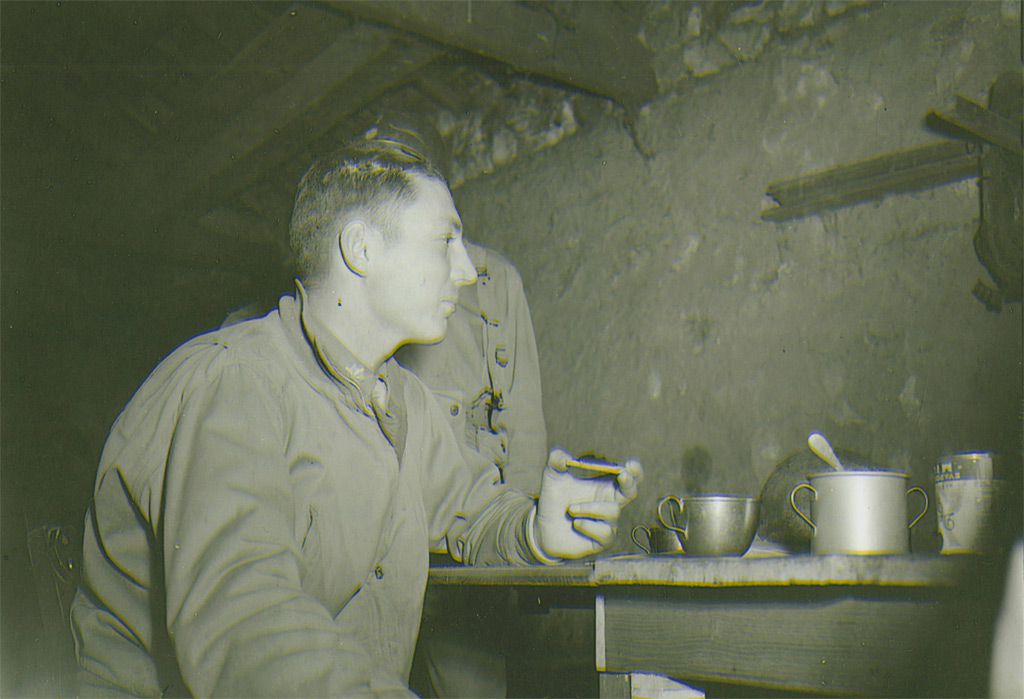
Lieutenant Colonel Charles J. Denholm, commander of the 1st Battalion of the 16th Infantry, on May 8, 1943, hours after he and other soldiers captured at hill 523 were freed from an Italian prison ship that had been repeatedly attacked by unwitting Allied planes in the Gulf of Tunis.
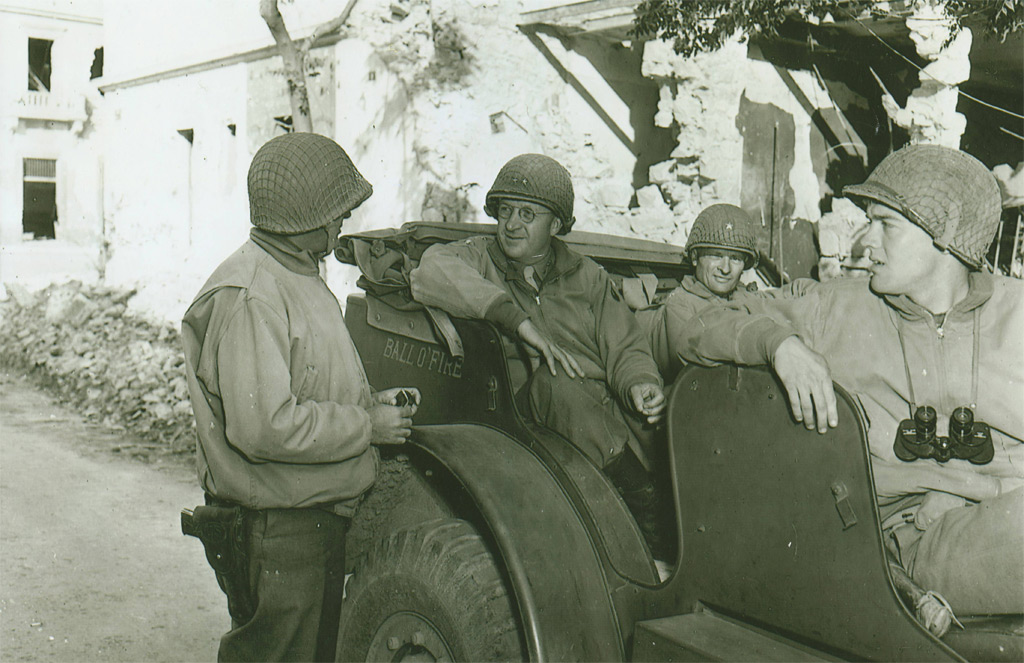
Major General Manton S. Eddy (left), commander of the 9th Infantry Division, and his assistant commander, Brigadier General Daniel A. Stroh, in Bizerte on May 9, 1943.
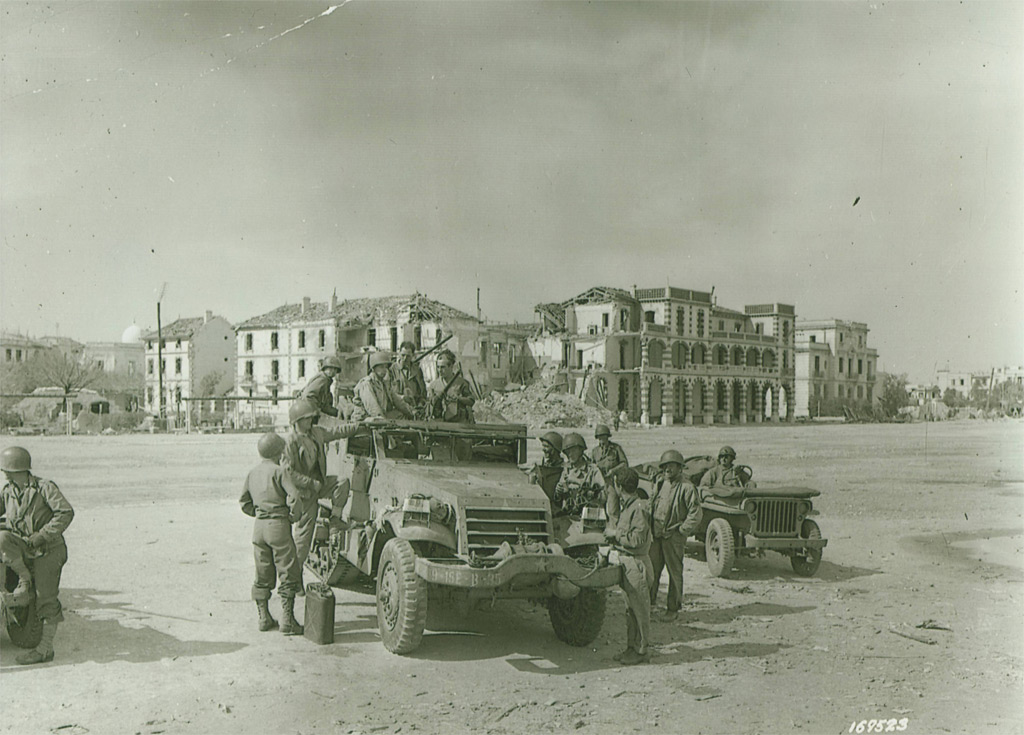
American troops along the Bizerte corniche shortly after the port fell. The town had been without running water for three months; typhus was present and cholra threatened.
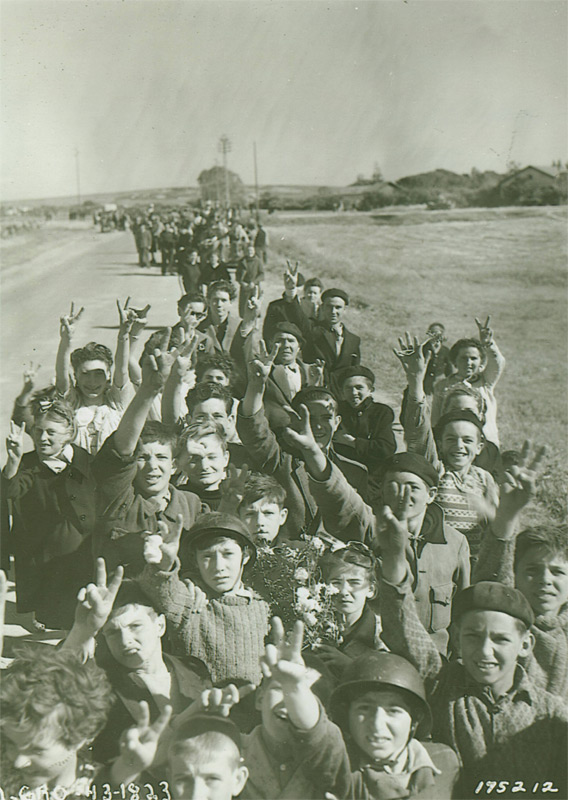
French civilians greet Allied troops with victory signs on May 10, 1943, shortly after the fall of Tunis.

An aerial view of Bizerte, taken on May 10, 1943. After seven months of bombing, not a single building was habitable. “Bizerte was the most completely wrecked place I had ever seen,” Ernie Pyle reported.

A captured German soldier from the Hermann Göring Division fills out paperwork in a temporary Moroccan prison camp before being shipped to the United States or Britain.
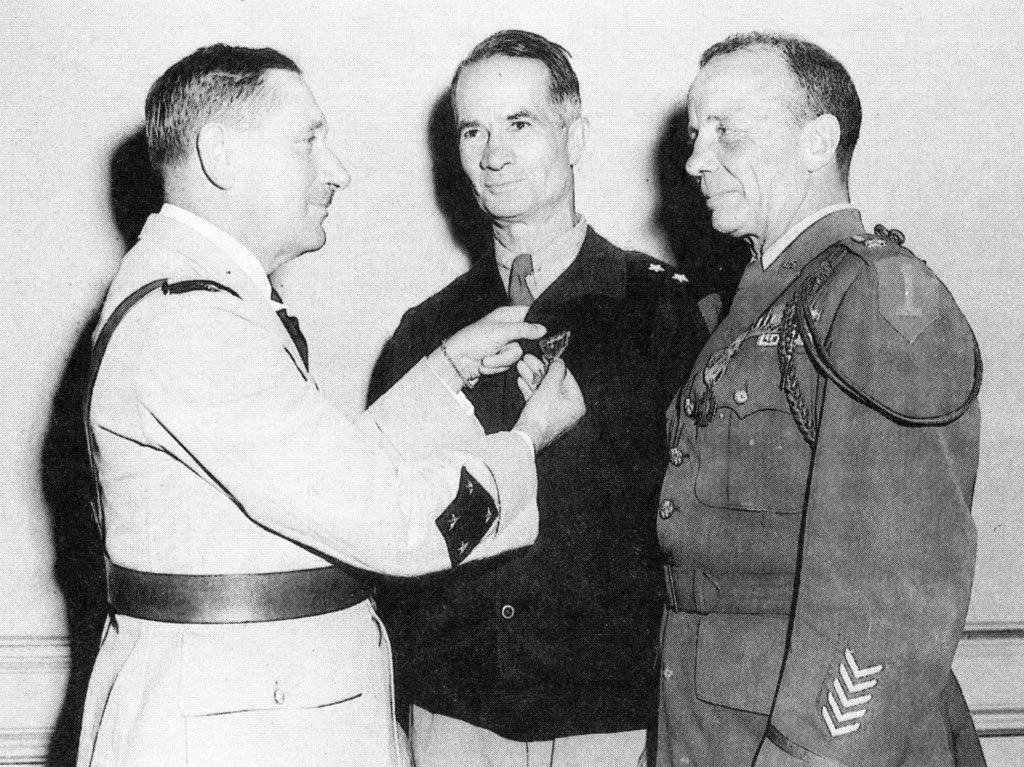
General Louis-Marie Koeltz, commander of the French XIX Xorps, presents the Croix de Guerre to Terry Allen (center) and Ted Roosevelt for their valor in the Tunisian campaign.
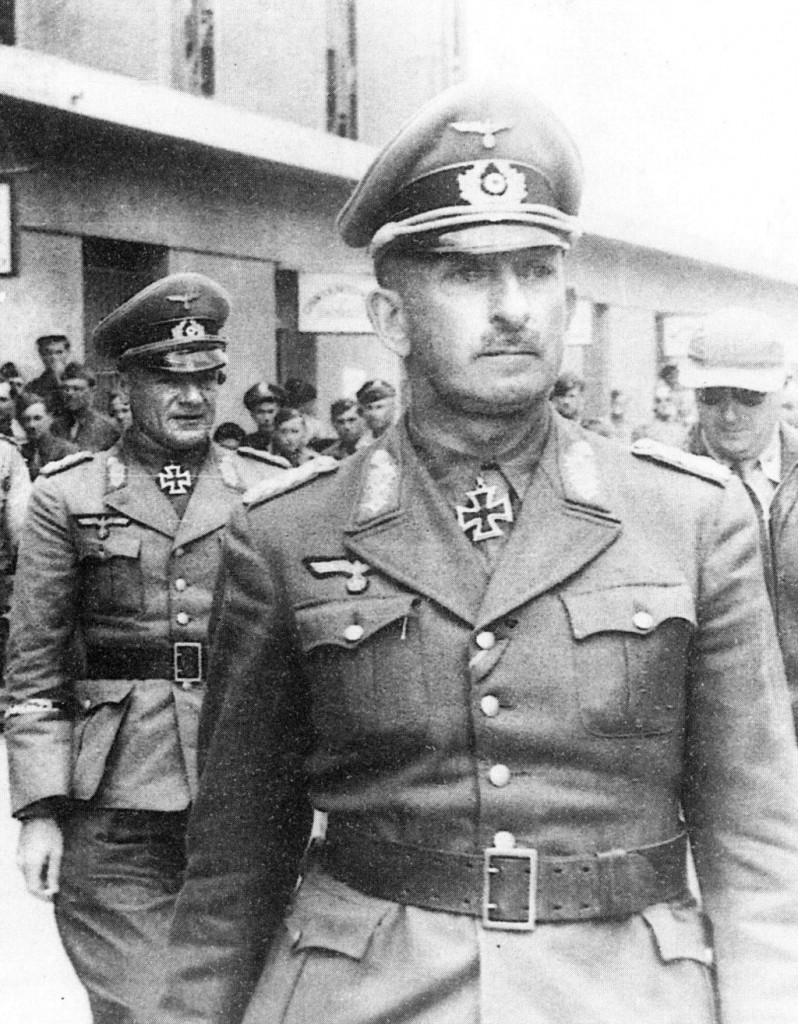
General Hans-Juergen von Arnim, commander of the Axis forces in North Africa, on May 15, 1943, three days after his capture and shortly before being flown to a prison in England. Behind him is General Hans Cramer, commander of the German Afrika Korps.

American soldiers from the 34th Infantry Division march through Tunis in the victory parade on May 20, 1943. Patton complained that “”our men do not put up a good show in reviews””; thousands of spectators disagreed, shrieking “Vive l’Amerique” from sidewalks and balconies.
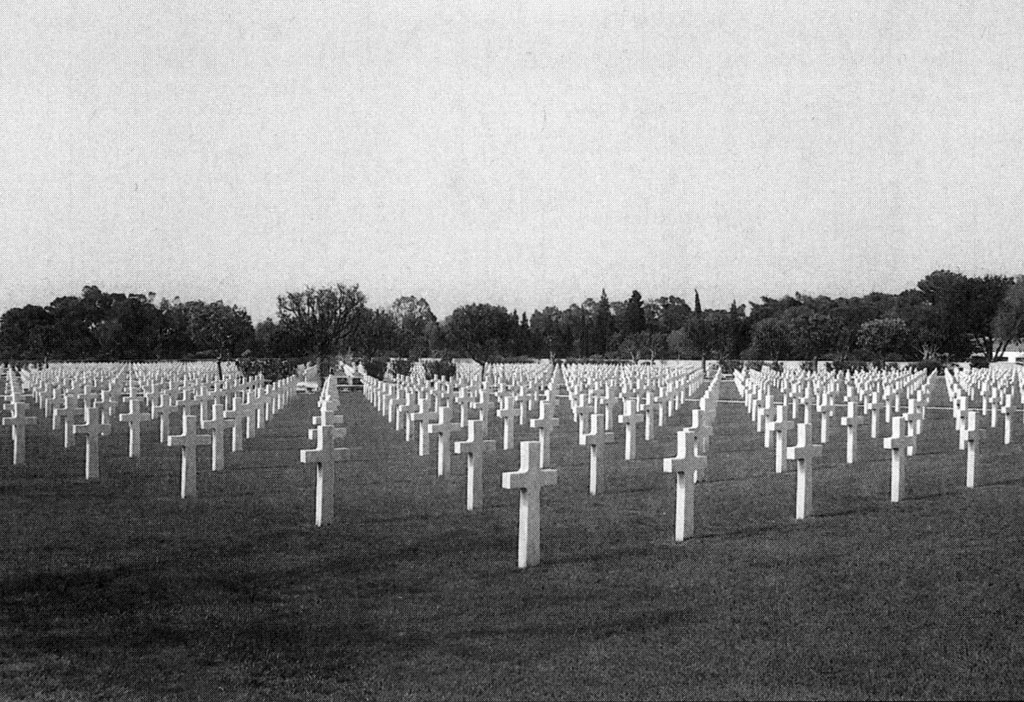
Twenty-seven acres of headstones today fill the American military cemetery at Carthage, outside Tunis. (Collection of the author)
